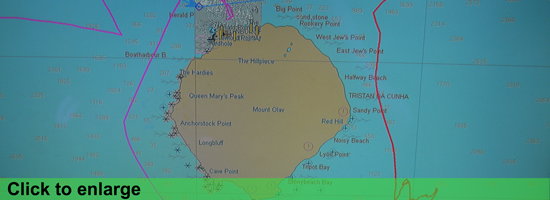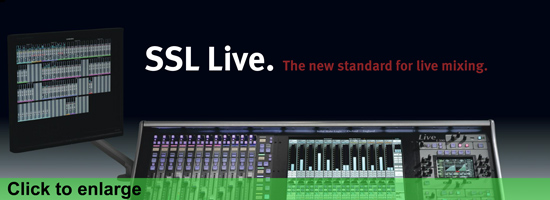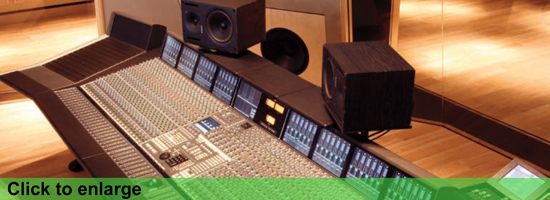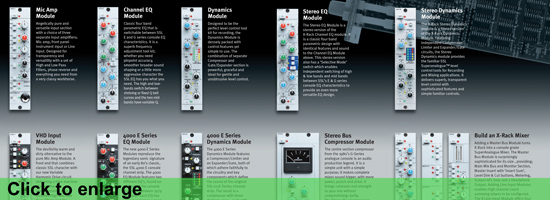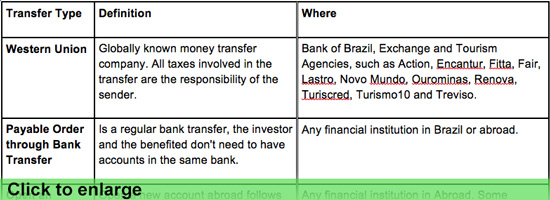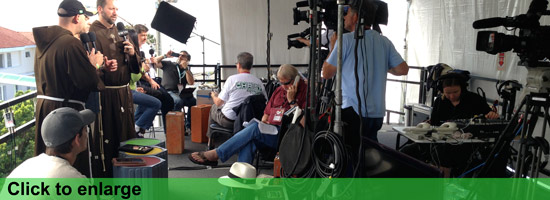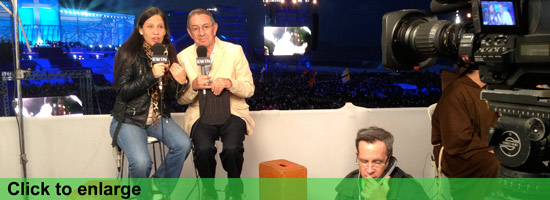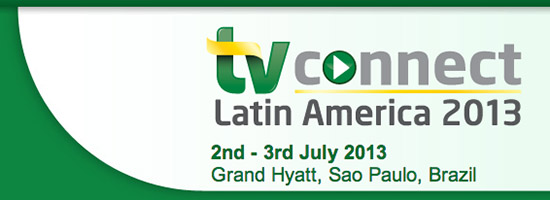
Director of Photography, Filmmaker and Editor Hopi Chapman
Director of Photography, Filmmaker and Editor Hopi Chapman
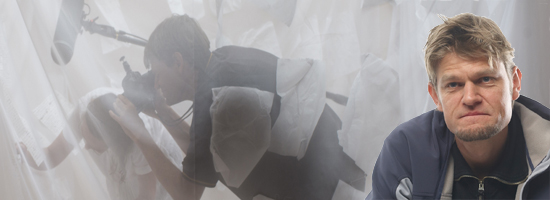
Christopher Robin Hopi Boomerang Chapman is his full name but he is normally called Hopi Chapman. We met Hopi on Facebook some years ago and later alive at the #RIO2016 Olympic Games. This Director of Photography, Filmmaker and Editor works in the South of Brazil at Flow Filmes. But his heritage is from Amsterdam, the Netherlands. He spoke very well english, so we invited him for our blog to listen to his adventures and projects in Brazil and elsewhere.
BB: How long have you been working in the TV business?
Hopi: Firstly I studied Cinema and TV at the University of Amsterdam. Then I worked as a trainee for a local TV station called Belissima TV, doing script, camera, directing and editing of short videos. Thereafter I worked two years for the Amsterdam TV station “AT5” as a cameraman for a sports program. As a freelancer I filmed and edited a lot of commercial videos, for the perfume chain Douglas but also a video about the national liberty day, and a music event in Amsterdam visited by fifty thousand people.
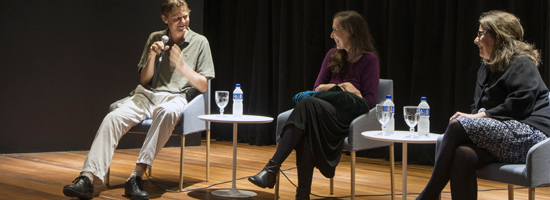
Hopi commenting a documentary at the screening 2014
I have been In Brazil since 1999. For one year I worked as a cameraman and editor for a fashion program and an extreme sports program. Then I worked for two years for an advertisement agency, making commercials, filming, editing and directing. Here I learned a lot about how advertisement works. I made a lot of political advertisements too, participating in six political campaigns as a cameraman and an editor. And I started to give editing lessons in Adobe premiere and After Effects. The last 7 years I made a lot of documentaries funded by the state and the Brazilian government.
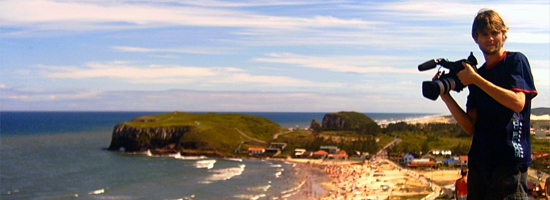
Making a film for an organization of bankworkers and their vacations in the south of Brazil, RS, SC, PR and SP
BB: Is communicating in the english language important for your job?
Hopi: Working in Brazil, mostly I do not use English although I did a few important jobs with Dutch and American people when English was fundamental to do the job. Speaking English is important in our business.
BB: On location at international events, is it difficult for you to talk with Brazilians ?
Hopi: It is not difficult for me to speak with Brazilians because I have lived for 19 years in Brazil. I speak Portuguese very well.
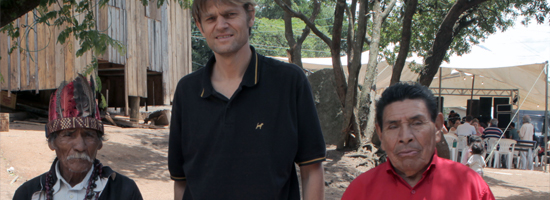
BB: Did you see a growth past years in international events in Brazil?
Hopi: Yes I saw a growth of international events like the Olympic Games and the FIFA World Cup soccer.
BB: What did this mean for your business?
Hopi: I worked on both events. During the World Cup I worked for a Dutch television company in Porto Alegre and the Olympic Games in Rio de Janeiro for Connecting Media who produced live webcasts for Facebook USA. It was great to be part of a crew that promotes these events to a lot of people.
BB: How was your job at the Olympic Games 2016 in Brazil?
Hopi: It was a nice job and great experience working together with Connecting Media for a company like Facebook and NBC. We had an international crew of Brazilian, American, Australian and Dutch crew members and it worked very well together.
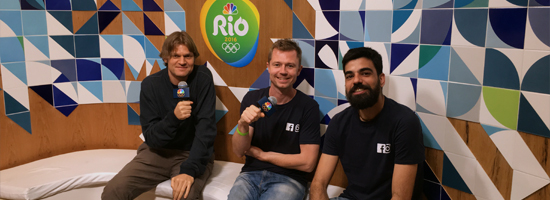
Camera for live webcast facebook at Olympic Games 2016 for ConnectingMedia
BB: Do you work besides Brazil also in other regions on the planet or do you have plans for that?
Hopi: I worked in a lot of places in Brazil, Uruguai, the Netherlands, Germany and Spain but for now I have no plans to work in other countries.
BB: Are there any surprising challenges you had at events past years?
Hopi: At the Olympic Games we had the challenge to transmit by Facebook interviews with atletes, comentators and special guests. And it went great. One challenge I have this year is making a tv series for TV Brasil and university tv channels, called Culturando. It is about young people of the periphery who work together in groups, creatively and productively.
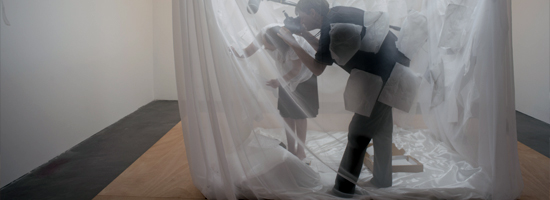
Filming and directing a documentary about the painter Karin Lambrecht
BB: You edit on Final Cut Pro. Do you still use it or did you update to Final Cut Pro X, Adobe Premiere, Davinci Resolve or AVID?
Hopi: I was only editing on Final Cut Pro for the last 10 years, but this year, after upgrading, my Mac did not accept it any more. I am using and Premiere CC a lot and I like it very much. It exceeded my expectations.
BB: Do you plan to learn other solutions, for example AfterEffects, Fusion or Apple Motion?
Hopi: I also use AfterEffects and give lessons in both After Effects and Premiere CC nowadays.
BB: Did you attended Exhibitions this year like SET EXPO, Church Expo, IBC or AES Brasil?
Hopi: This year I went to the Rio Content Market exhibition. It is a good opportunity to sell programs, documentaries and content to Brazilian and foreign TV Stations. There are people from all over the world.
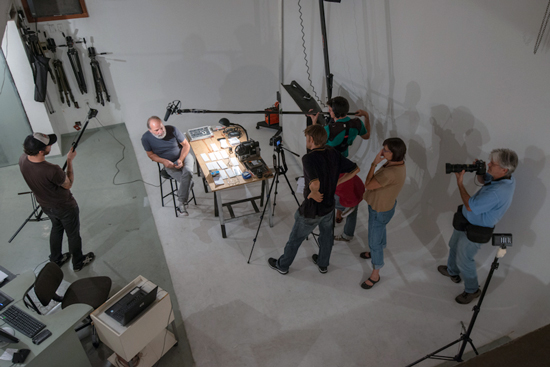
Directing and filming a documentary about a group of artists, called Nervo Óptico that is shown on channel Arte 1, TV//RS and TV Justiça
Productions made by Hopi Chapman - Flowfilms:
Kaingang Wisdom
This documentary (Full HD, 26 min, 2015) shows the lifes of two ninety-year-old kaingang Indians, one living in the city and the other in the countryside. (Produced by Flow Films)
Nervo Óptico, in search of a new eye (Trailer)
This documentary (Full HD, 26 min, 2013) shows that in Porto Alegre during the seventies a group of artists was thinking of art in a different way. The film is directed by Karine Emerich and Hopi Chapman. (Financed by the State Ministry of Culture and Pró-Cultura of Rio Grande do Sul)
Julio Plaza, the poetic and the political
This documentary shows the art of Julio Plaza. Directed by Hopi Chapman and Karine Emerich (26 min. Full HD, 2012)
Contact info
Hopi Chapman - Flowfilmes
Rua João Alfredo 312 cj. 616
90050-230
Porto Alegre/RS
Flow Films: Youtube - facebook - Flowfilms facebook page - Website
Like us if you want on Facebook, follow us on Twitter and Subscribe to our YouTube channel.
SET EXPO 2017 - What was discussed?
SET Expo 2017 - What was discussed?
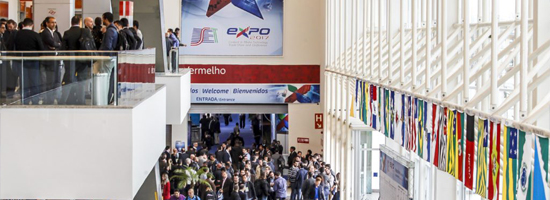
From August 21 to August 24, SET EXPO 2017 presented and discussed technical innovations, regulations and new products in the audiovisual market, covering the entire production chain, from creation through to distribution. At the Congress, the participants discussed how to manage, produce, transmit and distribute multimedia electronic content while debating the current standards and regulations, with the emphasis on the current and future scenario for telecommunications. At the Trade Show, the main domestic and international manufacturers showcased their products to an audience representing the entire audiovisual and broadcasting production chain.
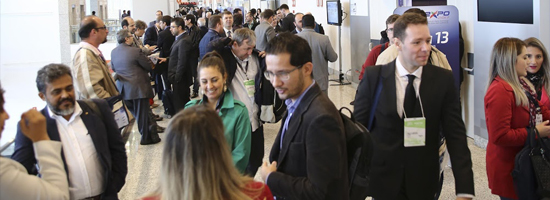
There were many points discussed this year, and the 14 main ones were:
New TV standards, UHD formats and next steps
Kenizhi Murayama, NHK senior researcher, gave an overview of the digital broadcasting service in Japan and the 8K signal, tested on major broadcasts in the country since 2015 (in that year, there was a transmission test, in 2016 a new test was made during the Olympic Games in Rio, and the next one will take place during the World Cup in Russia in 2018, and finally the model of transmission to be adopted for the Tokyo Olympics in 2020). NHK began testing the system on domestic broadcasts last year. And the test of transmission done in Rio last year, in partnership with TV Globo, is the same that we implemented later in Japan.
Another good news is about ATSC 3.0, the groundbreaking standard of terrestrial television broadcasting, that is almost ready, which increases the channel capacity by 30% with improvements in audio and video quality, with multiple audio and video streams, custom content, a wider choice of consumer and transmitter choices, internet interactivity, advanced emergencies and new alerts accessibility features.
There was also discussion about the next steps of the TV based on mobile devices, looking at the total view time for videos growing with the massive growth of views on mobile devices.
Another discussion is about new technologies and trends that could help reduce the compression rates for transmission, on the support of different formats of HDR and transmission networks for the distribution of 4K/8K signals.
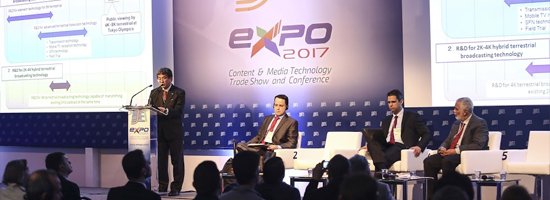
Digital revolution and the new doors that are opening
According to the presentation of the Google executive, Fábio Coelho, the TV set is still the main screen, but its use has stopped growing. By 2015, in the United States, for example, 60% of millennials (born between the mid-1980s and the 2000s) still preferred television, but 26% opted for a computer screen. Mobile gadgets were 14% of preference. By comparison, TV is the choice of 79% of the generation X (born between 1960 and the early 1980s), and 86% of baby boomers born during the post-World War II and 1960s.
Advertising revenue reflects this change and therefore "we should think about video rather than television," Coelho reflected, "and our role is precisely to help companies generate value in the digital economy. The human being remains the same, but today we have very different expectations. The consumer is much more impatient and lazy, and companies need to understand what role they play in reducing that friction." As examples within the company, the executive has shown that Brazil is one of the top five Google countries in the use of platforms and that Waze has Sao Paulo as the main city.
Also, Liliana Nakonechnyi, the president of SET - organizing entity of SET EXPO, analyzed the Brazilian trajectory of the analog TV system until the implementation of the Brazilian digital TV technology (ISDB-TB), created from the Japanese standard. She also said: "We have had a leading role in this movement, but the technology also throws uncertainties on how to adopt tools like IP for video, cloud usage, and other changes."
Masahiko Tominaga, representing Japan's contribution to the deployment of digital TV in Brazil, believes that "success in shutting down the analogue signal in cities as big as São Paulo is an important motivation for other cities in Brazil. Last year, was the celebration of 10 years of ISDB-TB, in 2017 El Salvador also joined this group of 19 countries. This signal pattern was adopted in almost all the countries of South America and Central America in Guatemala, Honduras, Nicaragua and Costa Rica.
More flexibility and scalability: IP in broadcasting
The IP expert at Grass Valley, Robert Erickson, hosted the IP Production: From Theory to Practice workshop, which took place on the afternoon of last Monday, August 21, during the SET Congress. According to the executive, the industry is changing and new forms of consumption are demanding adjustments in the production and distribution chain and business models.
"The means of distribution are very diverse and each requires an image resolution," he says, noting that removing the physical interfaces of the equation allows the construction of more modern solutions that meet modern workflow requirements.
IP can reduce operating costs and provides gains in scalability, flexibility and upgradeability, and broadcast industry is headed for that. And this change will take a while.
Claudio Szabas, the company's project manager, followed a demonstration of Grass Valley IP solutions, noting that there are no changes to the operator, which uses the panel that is already used, and can direct the camera, the IPG and share the multiviewer.
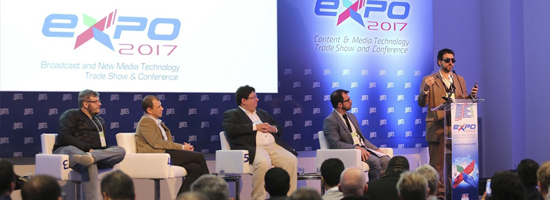
Virtual reality: closer than you think
Many still do not know, and believe that virtual reality is a fad, and others believe it is a trend. Marcos Alves, director of ventures of the Canadian YDreams Global; Renato Citrini, Senior Product Manager, Samsung Mobile Devices Division; and Ricardo Laganaro, director of O2 Filmes, were invited to discuss the issue in the panel on Innovation and Disruptive Technologies that took place on the afternoon of Monday, August 21, during the SET Congress. For them, the cheapening of the equipment, the improvement in the quality of connection to the internet and also of the production must help the virtual reality to reach the masses.
According to Citrini, Samsung has worked to perfect and at the same time cheapen its line of glasses for VR. The latest version of Gear VR comes with a control, the camera is smaller, has more functionality, such as the ability to do live streaming, and is cheaper. "Things evolve at an amazing speed. Anyone can be a virtual reality producer and consumer." The manufacturer has made some bets to increase the consumption of the technology, like transmission of fights of UFC with cameras positioned in the border of the octagon or transmission of shows, one of the most recent one was of the band Coldplay in the United States. Locally there are also some initiatives to increase the offer in the Samsung VR content store.
For Alves, the great opportunities for the diffusion of the virtual reality are the independent games, the arcades of virtual reality, the platforms of distribution and capture of contents, like the NextVR, the possibilities in the areas of education, health and in the industry of the sex. As a content producer, Laganaro is also committed to the development of technology and fast consumer acceptance. "I prefer to speak in immersive narratives," says the director, remembering that those who produce content need to start thinking beyond the flat screen, to learn a new way of operating in the audiovisual, because to produce using virtual reality is a cyclical process involving content, technology, production, narrative and language.
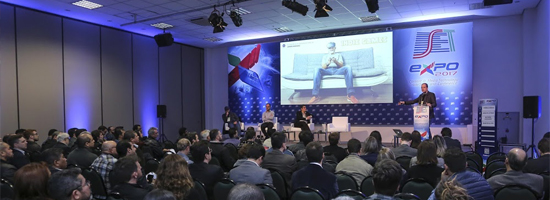
IoT: digital security
Brazil is the fourth country in terms of DDoS-type cyber attacks, in which servers are not properly invaded, but are prevented from functioning. The number is a good index to assess the importance of security for content production and broadcasting companies, an issue explored by experts during the first day of the SET EXPO 2017 Technology Congress.
One of the big doors to the threats are Internet-connected devices, such as smart TVs and mobile phones, which are expected to add up to 20 billion handsets by 2020, according to TV Globo's information security expert Leandro Valente. Often the danger is easy to avoid, as many devices such as security cameras and internet routers have the default password maintained by users. The key is to change the settings at the time of installation. In a universe in which every audiovisual work is available mainly in digital media, companies must also be attentive to their internal processes. 9 out of 10 companies in the country suffer from cybersecurity violations, said Tácito Leite, director of T-Risk. "The Internet of Things is the new frontier for cyber-extortion, but companies do not consider security as a fundamental requirement."
Startups: new technologies and opportunities
With gaps for new companies, new entrepreneurs, the market for audiovisual innovation can be a great opportunity for growth. Most audiovisual productions are still concentrated in traditional media, but lower-cost productions are gaining ground, as the public's attention is drawing.
Today it is possible to capture aerial images at a lower cost through drones, cameras and equipment are more accessible. For example, 360-degree content and integration with OTTs make content profitable, showing that a good idea is enough to become a big business.
"More than money, startups need business opportunities," said Edson Mackeenzy, head of the SET Innovation Zone, a pavilion designed to give visibility to startups working in the audiovisual industry during SET EXPO. "Companies need to invest and believe in national technology."
Also, the president of Abragames and CEO of Webcore Games, Fernando Chamis, addressed the gaming market in Brazil and the world, and gave examples of games made in the country that today are successful worldwide, such as Horizon Chase. "It's a market that has been growing, for a long time, 10% a year," he said. In Latin America, Brazil is the market that makes the most, although the number is still low, due to cost and piracy.
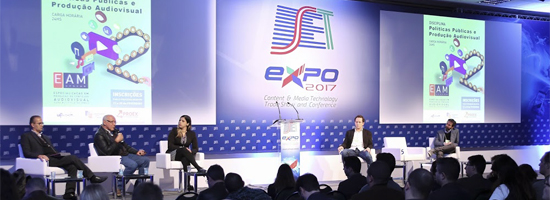
SET EXPO 2017: Business and optimism
The mission of SET EXPO 2017 is to stimulate discussions and offer the solutions to foster the changes of the industry in Brazil towards digital convergence. And the expectation of the exhibitors is that the event move more than $ 40 million in business.
The main point was the convergence of Telecom companies, pay-TV operators, large and independent producers, the advertising market and even youtubers.
In addition, the video market is diversifying and presents several options, highlighting 4K, HDR, IP technologies, all new workflows and formats.
The Technology Congress brought together 1400 congress members in four days of panels with experts from companies such as TV Globo, O2 Filmes, Dolby Laboratories, SBT, RecordTV, Ericsson, Samsung, and more than 40 entities, such as SEBRAE - Brazilian Service of Support to Micro and Small Enterprises; ABRATEL - Brazilian Radio and Television Association; ABERT - Brazilian Association of Radio and Television Broadcasters; AESP - Association of Radio and Television Broadcasters of the State of São Paulo, among others.
Cloud Storage trend
Digital transformation in the industry has changed the way suppliers and broadcasters think and market their experiences and products.
The demand for OTT video services is growing, and since then the budget for cloud services has been following this trend. One of the concerns when it comes to the subject is the security issue.
There is no doubt that the cloud will continue to be a storage trend and that the market dynamics have brought several issues for the companies that use the service, since there must be agile, fast and economical systems. It is worth mentioning that the use of the cloud is not only for end users, but for several sectors, such as the journalistic, in social networks, in post-production.
UHD and Digital Cinema
The innovations and disruptive technologies point to ongoing transformations that encompass audiovisual productions in multiple screens and windows. In the stations there is the expectation of the arrival of the 4K, something that already is reality in the cinema.
In addition, there are many goals in a fully digital environment, especially in post-production, in process planning, always ensuring maximum quality.
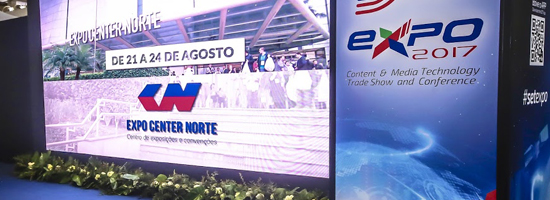
IP and Satellites
Satellite industry is going through a very special moment, not only from an application point of view, but also from a technology standpoint. And consumer behavior dictates the need for new IP technologies.
With the IP universe, new applications will have room for video and audio. The trend is that satellite companies become IP video companies, even if it is a conservative market, changes are expected to occur more and more.
Switch-off: Lessons and what’s around
The switch-off in Brazil has worked well and every city that enters the digital age there is a new learning. The instruction of the population and the installation of adapters has had a positive return, even if at the beginning they had a concern with the distributed kits.
One of the concerns was the audience issue, whether the transition would cause the audience to fall due to signal change, but studies showed that there were no changes.
In addition to the concerns, it is relevant to say that the market has grown as people began investing in new TVs.
Digital era: Real experiences and audience
Engaging consumers with experiences is the best way to ensure audience in the entertainment market.
The phrase that sums up the new consumer mode of media is: Unique experience. The idea is to bring people on different platforms to the same point, in order to establish a relationship, loyalty to the client using the convenience of digital and preserving the best in the face-to-face experience.
The trend can be seen through data, according to research conducted by Marcela Doria, director of research for Twitter in Latin America, 9 out of 10 people declare that the smartphone is the most used device to access the Internet, and 7 out of 10 multiteels are declared. That is, many people use the smartphones while watching television, for example. In Brazil alone, more than 1 million tweets per day are related to TV. Twitter today is the smallest distance between the viewer and the content, and the tool is able to contribute about 13% to the audience of a show, with even greater force in live events such as the Oscars.
OTT in Brazil and worldwide
According to the research presented by Salustiano Fagundes, founder of HIRIX Engenharia de Sistemas and CEO of HXD Smart Solutions, the OTT market will reach US$ 64 billion worldwide in 2021, with US $ 3.59 billion being only between Brazil and Mexico, who should lead Latin America and occupy, respectively, the fourth and fifth global posts. As for the survey conducted in the United States, consumers spend 45% more time choosing what to watch on VOD services than looking for a program to watch on linear TV, and 4K video streaming is growing, with Netflix and Amazon broadcasting on that quality.
Meanwhile, NHK's senior research engineer, Masaru Takechi, who works to deploy and harmonize the Hybridcast, a second-screen and VOD/streaming service said that in Japan, more than five million people use the system, with flexible selection of content, generating targeted advertising and a similar content relation.
The director of digital platforms Globo.com, Marcello Azambuja, talked about the live streaming company. The first was the Big Brother Brazil and in 2003, the first OTT of Brazil was launched, the Globo Media Center, and in 2005 it had the broadcast of the NBA final. In 2010, at the World Cup, the site made the broadcast for the first time in HD. And in 2014 had the first multi-camera live stream. He complements saying about the availability of 4K content available on Globo Play.
Migration of AM radios
Radio is one of the most accessible and popular media worldwide, and the migration of AM to FM broadcasters has moved companies and regulators in Brazil.
RBS project manager, Cauê Franzon, showed that conventional radio is still 58% of the audience between 10am and 11am, and 15% of cellphone listeners between 2pm and 3pm. Only 5% listen through the computer between 2pm and 3pm. The data compiled by Ibope show that radio reaches 89% of people in the 13 metropolitan regions where the audience is measured, which is equivalent to 52 million people. The average time of the tuned is of 4h36, which shows a space of great growth in mobile devices.
The great effort needed to accommodate the stations that will migrate from AM to FM is much discussed, and we are likely to see more discussions about it, to make the switch as smooth as the switch-off is on TV in Brazil.
If you want to see how the fair was, visit the link.
In this video you can view some of SET Expo 2017:
We would like to thank Marcel Almeida for writing for us.
More info you can find on his LinkedIn: br.linkedin.com/in/marcelmg77/en or follow him on Twitter @marcelmg77
Like us if you want on Facebook, follow us on Twitter and Subscribe to our YouTube channel.
mentioned:
SET EXPO 2017 : Website - facebook - Twitter - YouTube
SET : Website
Brazilian TAX authorities clarify positions on the export of services and temporary imports of goods
Brazilian TAX authorities clarify positions on the export of services and temporary imports of goods

We found a very interesting article from june 2016 on the website of International Tax Review. It is an important article for Broadcast and Audio Visual companies who want to do a productions and so do business in Brazil. The temporary import law has being changed last year, the change was connected to the upcoming event ‘Olympic Games’ in Rio de Janeiro. To make the temporary import of Audio Visual equipment a little bit less of pain for the customs at airports and ports. The temporary import law is still in-tact and foreign audiovisual companies need to know about it for getting your ENG camera set or even a whole OBvan into Brasil without paying important taxes. But as the article will show… it is more than just that. Read the article here.
We have made past years also some other articles about this and other financial subjects concerning doing business and working in Brazil:
• Authorization for Filming in Brazil
• Remittance of International Payments
• Startup a company in Brazil
To have assistance in getting your crew and equipment into Brazil we can just point you out to a experiances ‘fixer’ in Brazil who help out with the temporary import and help at the airport customs. Connecting Media is very familiar with Brazil, it’s law’s and culture, check their page here.
We hope you’ll like it.
Like us if you want on Facebook, follow us on Twitter and Subscribe to our YouTube channel.
SET EXPO 2016
SET Expo 2016

One of the major events in the broadcasting and new media sectors of the year took place at Expo Center Norte, SET EXPO 2016, in the Exhibition Hall Red, São Paulo (SP). With Conference: 08/29 to 09/01 and Trade show: 08/30 to 09/01.
Organized by SET (Sociedade Brasileira de Engenharia de Televisão), a not-for-profit technical association consisting of technology and operating companies and professionals and whose main purpose is the development of technical knowledge throughout the entire electronic media supply chain, from production to delivery. In Brazil, it represents the largest discussion forum on market standards and trends for the creation, management and distribution of electronic content.
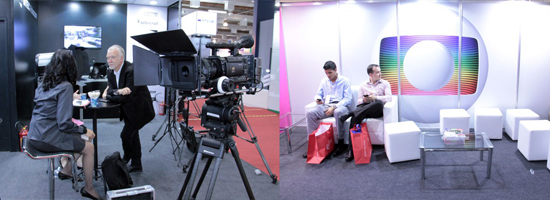
The event will host the major manufacturers on the global market; executives and technical personnel, specialists as well as researchers from government bodies, plus the press, technology, entertainment and broadcast sectors.
Last year, in its 27th edition, 15.900 participants attended the 5-day event, with the presence of 2.040 conference delegates, 150 members of the press, 5 international pavilions, 192 exhibitors, 8.000 m² net exhibition area and more than 400 exhibitor brands.
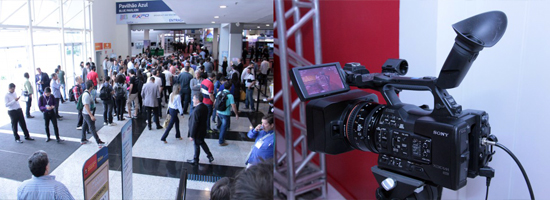
The event, this year, will had an exhibition area of 15.000 m², housing the stands of benchmark companies in the equipment, technology and services sector of the broadcast, telecommunications, audiovisual and new media market. This area will consist of thematic and international pavilions, made it easier for visitors to find their way around.
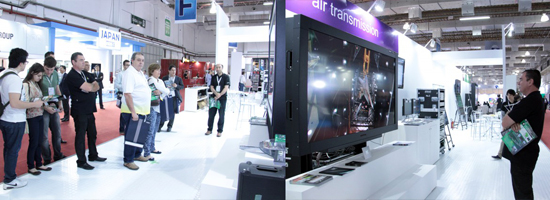
A program to support startups that create solutions for the entertainment industry, such as audiovisual producers, radio and television broadcasters, the cinema and new media will be at SET EXPO 2016, and it is called SET Innovation Zone.
SET Innovation Zone program had two stages: the public call, with free and open registration, and the presentation of the solution at SET EXPO 2016. And the 10 companies selected will receive a standard exhibition stand, already assembled, within the Innovation Pavilion of the trade show, and did showcase themselves, completely free! This was a unique opportunity for companies in the initial set-up phase. If you have any interest, it is worth taking a look at for more information.
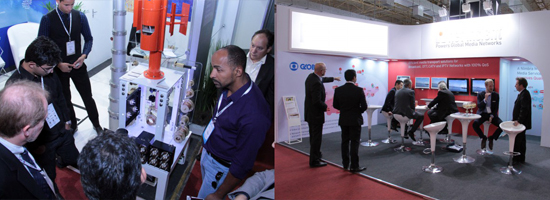
The topics to be discussed during the Congress were:
August 29, 2016: Distribution, Exhibition & Transmission: TVD – Analog Switch Off, Automation; Internet & TV: Sensoring & Big Data, Content On-line, OTTs & APPs – Current scenario of OTT services, Projects And Professional Profile; Hot Session: The Future of free-to-air Television; Innovation & Disruptive Technologies: VR – “Will Virtual Reality be the most social platform of all?”; Infrastructure: Energy - Quality and Efficiency; Research & Development: Vision of communicators regarding to the future of broadcasting and new media; Regulatory & Norms: EAD – Be Digital - The Rio Verde (GO) pilot experiment, preparations for Brasília and São Paulo and projections for Brazil; Innovation & Disruptive Technologies: Drones; Consumption: Connected TVs and interactivity.
August 30, 2016: Opening & Commemoration: Opening Ceremony SET EXPO 2016 & ISDB-T 10 years celebration; Trade Show SET EXPO 2016: Inauguration Fair SET EXPO 2016 – RED Pavilion – ground floor; Hot Session: Analog Switch Off; Internet & TV: IoT – Internet of Things & Swarm Intelligence, Network Neutrality - Internet Regulatory Framework; Research & Development: Innovation in teaching technology, Academic & Scientific, ICT - Japan Context; Regulatory & Norms: Regulatory Processes; Content Production: Technology in News and Sports, Audio & Acoustics; Innovation & Disruptive Technologies: NHK Lab – What is coming in next 10 to 20 years?, SMPTE Centennial.
August 31, 2016: Radio: OM x FM migration reflexes, Radio, Internet, Music and Mobile, Efficiency Aspects of FM Transmission, 80 years of Radio Nacional; Hot Session: Challenges VOD & OTT; Research & Development: High Dynamic Range Master Class; LATAM: The Future of Television Programming, Consumer Market; Infrastructure: Cloud, Non-Ionizing Radiation (NIR) Standards at Sites, How hardware virtualization must contribute to the future television; Content Production: ITU & American Spectrum Auction, 4K/8K, UHD Premium Certification, HLG, PQ, WCG, HEVC HDR10, Olympic Games, Interference TV & 4G, Storage; Regulatory & Norms: Accessibility.
September 1, 2016: Keynote: UHDTV – From Production to Distribution; Internet & TV: Digital Security & IEEE Ethernet Alliance; Hot Session: UHDTV- From Production to Distribution; Consumption & Audio Visual Production: Displays, Displays (stage) & Interaction, Projection systems, Lighting; Content Production: Virtual Scenarios and Games, Contribution kits; Distribution, Exhibition & Transmission: Evolution of space segment for contribution and distribution in the era of Ultra HD 4K, Streaming and distribution IP - Challenges, Transmission systems; Research & Development: Ultra High Definition.
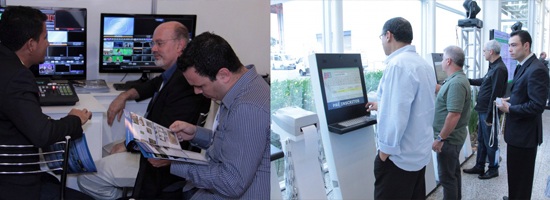
Stay tuned in those numbers:
Conference: August 29 until September 1, 2016:
Trade Show: 12 noon until 8 pm;
Conferences: 9 am until 8 pm;
Expo Center is located in José Bernardo Pinto street, 333 - Vila Guilherme, São Paulo – SP.
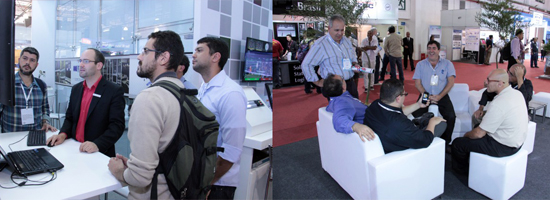
In this video you can view some of SET Expo 2016:
We would like to thank Marcel Almeida for writing for us.
More info you can find on his LinkedIn: br.linkedin.com/in/marcelmg77/en or follow him on Twitter @marcelmg77
Like us if you want on Facebook, follow us on Twitter and Subscribe to our YouTube channel.
mentioned:
SET EXPO 2016 : Website - facebook - Twitter - YouTube
SET : Website
Rodolfo Souto , being a tech guy at TV Globo
Rodolfo , being a tech guy at TV Globo
We met Rodolfo Souto some years ago at the Formula 1 at Interlagos, São Paulo. He was responsible for some cabling between the international Broadcasters and the Host TV Globo. In their booth at the TV compound we found Rodolfo with his head in a rack. There was a ‘small problem’ in which he had to solve’ he said. The next morning we spoke to him again, he told us he re-cabled the whole rack overnight to solve the problem. A Die-Hard technician this Rodolfo. And…. he spoke very good english. so we invited him for our blog.
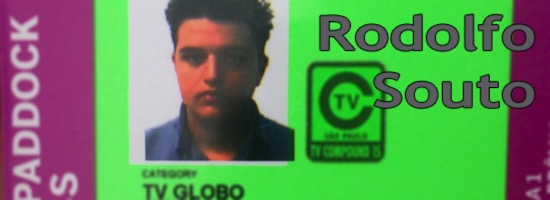
BB: Can you tell us about yourself and your job at - External events São Paulo?
Rodolfo: My Name is Rodolfo, and I`m a Technician of TV System. I am working for TV Globo since December 2006, almost 10 years now.
BB: Tell us about the company TV Globo - External events São Paulo and how long does TV Globo - External events São Paulo exist?
Rodolfo: The External team of Events in São Paulo exists since 1975 i think. The first soccer game that the External events team broadcasted was with only 3 cameras, the signal output were a Analog MicroWave route between the Soccer-Stadium and TV Globo in São Paulo. The guys that worked on that production time are still very proud of what they achieved those days.
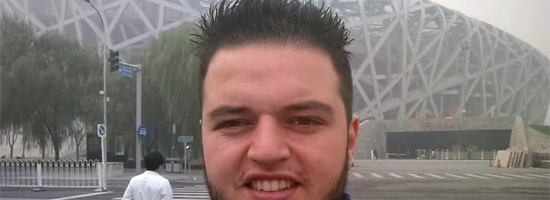
BB: Did you see a growth past years in working at international events for you in Brazil?
Rodolfo: Yes a lot. I Worked at productions like the Confederations Cup, the World Cup in 2014 and this year i will be at the Olympic Games in Rio de Janeiro. Aldo, i worked on the last 5 Formula 1 GrandPrix’s at Interloagos in Brazil.
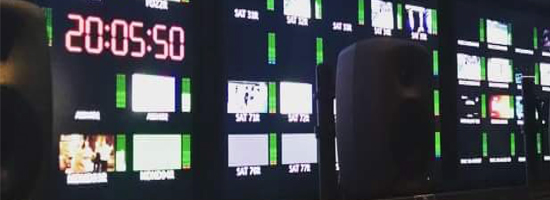
Our OBvan at TV Globo is one of the top of Latin America. I can see that after all this years Broadcast production are getting bigger and harder to achieve in the technical sense. I like that, it makes me feel good when i am working on an International Event, meeting colleagues from all over the planet and being able to talk with them.
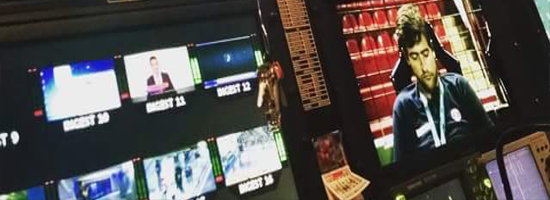
BB: What this growth ment for you and your colleagues at TV Globo - External events?
Rodolfo: TV Globo has 5 department: Rio de Janeiro, São Paulo, Belo Horizonte, Brasilia and Recife. When we have something new coming for us, normally it starts in Rio and São Paulo. So we get a lot of time to learn and understand the new technology, equipment and solutions. This is very well arranged at TV Globo.
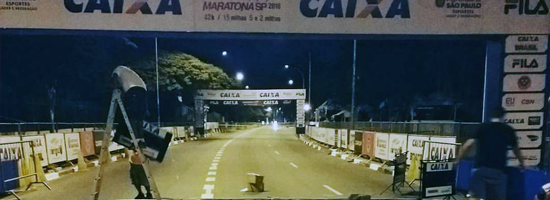
BB: Do you work besides Brazil also in other regions on the planet?
Rodolfo: Yes i did. In 2014 i went to China and also Singapore. The Brazilian national team played 2 friendly games over there. I spent even 12 days on this location job. It was amazing meet the other side of the world. In 2015 i went to Colombia to broadcast a Corinthians`s game at the Libertadores championship. That was awesome too. Speaking English is very important on International events. It was because of the english that i got this opportunity to go to China and Singapore. Knowing the english language did give me this opportunity.
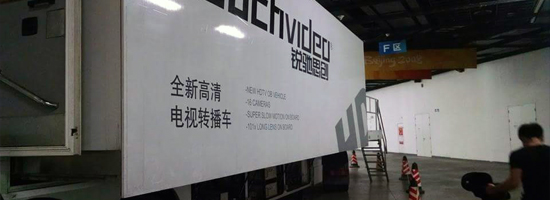
BB: On location at international events, is it difficult for you to communicate with Europeans, Americans, Australians or LATAM countries?
Rodolfo: Yes, with the LATAM’s i try to speak in Spanish but especialy with the Argentines it is hard. They speak to fast. With the Europeans it is alright, they speak very well english. It is only boring for me when they speak their own language. I do not understand anything they speak than. I worked with Australians at the World Cup in Sao Paulo, that was ok too. At the Formula 1 i speak a lot with the British guys. For me it is kind hard, to understand them. It is because i studied American English, so it is hard to get used to understand their they speak english, but in the second day everything goes already better. Every time you learn.
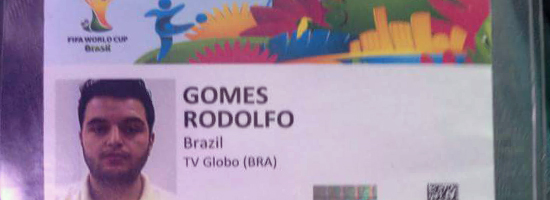
BB: How do you see your job due to Olympic Games 2016 in Brazil?
Rodolfo: It will be awesome for sure. We will never see an event like this in Brazil soon again. I am very excited to be part of this event. I will be working at Arena Corinthians in São Paulo working for the OBS. It will be unique experience, my expectation are the best you can imagine.
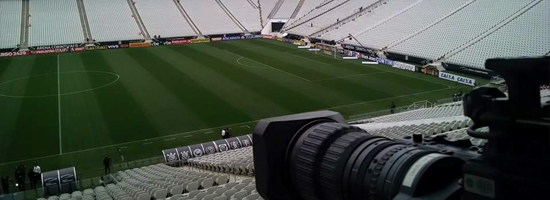
BB: Is there any surprising challenges you had at events past years?
Rodolfo: No, not really. We always have something new popping up every day in this kind of job. After some years i got used to all types of bad and good surprises. The challenges make us better and stronger. Things that i learned on International events i carry with me at every other production i do, in Brazil and abrought.
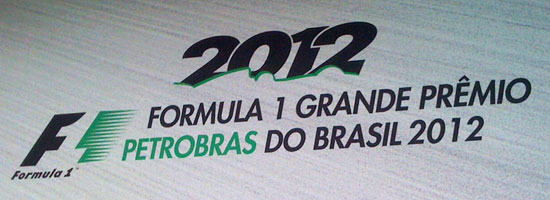
BB: What surprising challenges you think you will have at the Olympics this year?
Rodolfo: I think that we will have all the possible surprises thinkable. We will be the Host Broadcaster at the Olympic Games. All the broadcasters in the world will come to us to ask for some signals or assistance. A lot to solve and help fur sure.
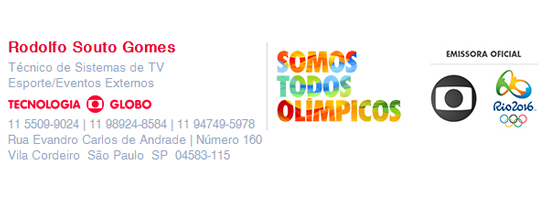
Video Olympic Games (Official Theme) - Rio 2016:
Like us if you want on Facebook, follow us on Twitter and Subscribe to our YouTube channel.
mentioned:
Globo TV: website
Expo & Conference - ABTA 2016
Expo & Conference - ABTA 2016
One of the most traditional events on pay TV and digital services in Latin America will took place this month in São Paulo at Transamerica Expo Center, from 29 June to 1st July, the ABTA Expo & Conference 2016.

In the year of the Olympic Games in Brazil, ABTA completes 24 years bringing innovations in pay-TV, broadband and media market, focusing on innovation in video services, new technologies, on-demand content distribution platforms such as IPTV and OTT, advertising, satellites, TI, and distribution of linear, non-linear and high-definition content. The Conference will had presentations and panel sessions by highly qualified speakers with professionals from channels, ad agencies, operators, regulators and government. The immersion in technology and management trends will be available in Pay-TV Seminars (STAs), also training seminars with presentations of case studies and market solutions, that is essential to know what is new about technologies and pay-TV tools.
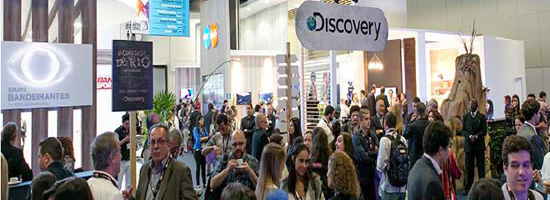
The issues to be addressed in the STAs are: The new consumer of video, DOCSIS 3.1, Advances in multiplatform delivery, The new generation of headends, Sincab, The Internet of Things (IoT), Technology that makes new business models possible, User interfaces for set-top boxes, The road to delivery of content on multiple platforms, How pay TV will develop in the next five years, CxOs and The evolution of pay-TV services.
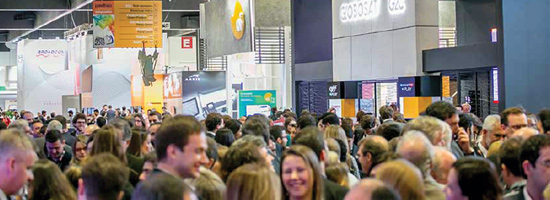
In the Conference program, we have in strategic panels: The reality of the industry and the policy/regulatory outlook, Pay TV in a year of Olympics and challenges, From set-top to cell phone: how pay TV services evolve, Advertising and the Olympic Year, The value of digital services to consumers. In Thematic Sessions we have: The Internet: from the reality of services to regulatory models, User experience and digital services, Audiovisual regulation: from SeAC to VOD, Tackling digital clandestinity, The importance of sports programming to pay TV, Programming in the age of ultrasegmentation, Advertising: consolidation and the role of pay TV, Embracing the reality of on-demand content, Why local production is flourishing, What has happened to C class consumers?, From TV to 4play: the evolution of bundles and offerings and Growing in turbulent times.
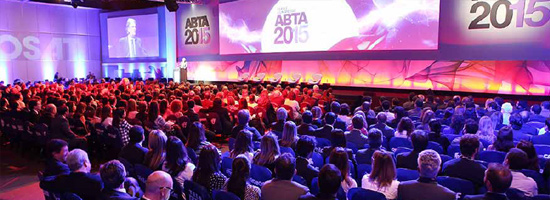
Local and international exhibitors did showcase their brands and developed new business leads in an exhibition space of 9000 square meters.
video:
We would like to thank Marcel Almeida for writing for us.
More info you can find on his LinkedIn: br.linkedin.com/in/marcelmg77/en or follow him on Twitter @marcelmg77
Like us if you want on Facebook, follow us on Twitter and Subscribe to our YouTube channel.
mentioned:
ABTA 2016 : Website - YouTube
IPTV in Brazil
IPTV in Brazil
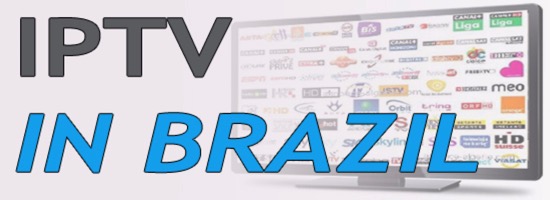
The demand for better quality, greater variety of content, option to consume interactive services are the main points for the growing of the technology and fall in the taste of users. The Television over IP is an alternative technology to DTH that instead of using satellite systems uses a part of the internet bandwidth. This requires a set-top box to change the IP signal to your television. To be able to use the service you need at least an exclusive connection of 4 Mbps for HD content with MPEG-4 compression. However, each channel determines the transmission rate, such as Globo TV that requires HD programming delivering to the client at 18 Mbps.

In addition to the interactive system, you can do purchases, access movie sites, videos, music and photo presentations without the necessity of a computer. In the security system can highlight two transmission systems, CAS (Conditional Access System) where there is control of transmission of a service to the consumer; and DRM (Digital Rights Management) that allows or not the use of digital imaging products, video or audio.
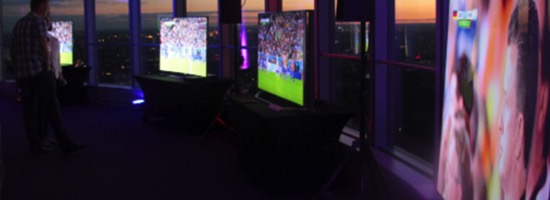
In Brazil, the pioneer was Brasil Telecom with Videon in Brasilia (DF), allowing the viewer to acquire films, documentaries, cartoons, concerts, shows and exclusive content that go beyond the concept of broadcasting, as a combination of telephony services directly on television. Today there are some initiatives at Telefônica, Oi, CTBC and Sumicity in Rio de Janeiro.
Another trend is the Unicast mode, since the possibility IPTV content and flexibility, such as on-demand services. The programming grid (EPG) customization is a one-way, in case of interactivity, and there is a lot of opportunities, exploration and a lot of research to do in this field. It is worth mentioning that connectivity with mobile devices is essential to the success of IPTV and the possibility of content in 4K and 8K with compatible TVs.
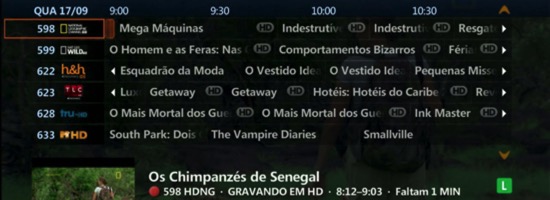
The success of the service will depend on some regulatory obstacles and other technologies such as FTTH, with the aid of optical fiber on delivery of a service with great quality. The QuadPlay with IPTV can replace the use DTH, excluding satellite system dependence, which in adverse conditions the signal may be interrupted, such as during storms or co-exist in a hybrid way. In 2015, the increase in service was 43.24% compared to the previous year, DTH had 60.07% of the market in July 2015, against 61.01% in December 2014 (according to data from Convergecom).

Among the problems faced in Brazil to implement the mass service, there is the limitation of Internet quality (great use of radio, instead of optical fiber) and outdated infrastructure that do not support enough amounts of data. It is therefore essential investment in fiber and high-capacity backbones for the proper functioning. By the end of this year, it is likely that Brazilian market grows along the upgrades of IPTV.
More news on the subject and future trends, you can see here in Broadcast Brazil.
video:
We would like to thank Marcel Almeida for writing for us.
More info you can find on his LinkedIn: br.linkedin.com/in/marcelmg77/en or follow him on Twitter @marcelmg77
Like us if you want on Facebook, follow us on Twitter and Subscribe to our YouTube channel.
mentioned:
Brasil Telecom : Website - Facebook - Twitter - YouTube
Telefônica : Website - Facebook - Twitter - YouTube
Oi : Website - Facebook - Twitter - YouTube
CTBC : Website - Facebook
Sumicity : Website - Facebook - Twitter - YouTube
O2 Filmes Shooting a McDonalds Spot with Blackmagic Design

We are having a nice interview with Paulo Barcellos of O2 Filmes. Paulo is the Post Production General Manager at O2 Filmes. We talk with him about a recent project for McDonalds in which O2 filmes used some special camera’s and also the grading software from Blackmagic Design.
BB: Tell us a little bit about O2 Filmes and yourself Paulo.
Paulo: O2 Filmes exist already 24 years and is a Brazilian Audio Visual production company. I work at O2 Filmes for 2 and a half years now as General Manager O2 Post. We produce for film, tv and commercials anywhere on the globe for major companies and brands. Advertising and the production of content such as TV series and Feature are the strongest sections for O2 Filmes.
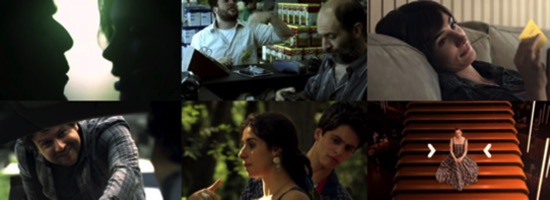
BB: Is communicating in the english language important at O2 Filmes? We noticed that your website besides Portuguese is also accessible in English.
Paulo: Absolutely.

BB: Did you see a growth in audio/video related productions in 2015 for O2 Filmes and how do you see the broadcast market in 2015 due to the Olympic Games:
Paulo: Despite the deep recession Brazil is facing this year, we are still seeing growth for the Post Production of entertainment projects such as TV Series and Features. We believe the Olympics next year in Rio de Janeiro will drive the production of advertising content up in the first semester of the 2016.
BB: Are you partnering with other foreign companies?
Paulo: Not at the moment, but we are open for it.
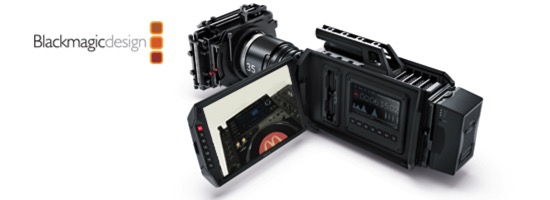
BB: This production for McDonalds was done with BlackMagic Design Camera’s. Can you tell us why your choose for this brand and type of camera?
Paulo: We believe these Blackmagic Design cameras meet the quality (both build quality and image quality) requirements for production of advertising and entertainment content. We’ve recently acquired three URSAS and two BMPCC4K, and we started using them on the McDonald’s ad. We like Blackmagic Design for their forward thinking vision, fast pace updates, excellent support and affordable prices.
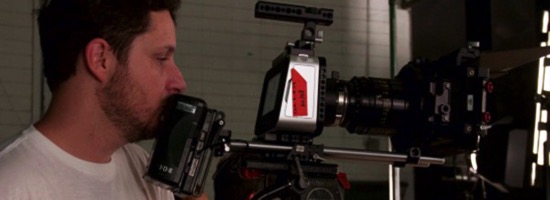
BB: Editing & Gradings was done in Davinci Resolve 12. Can you tell us why you edit in Davinci Resolve in stead of Adobe Premiere, Final Cut Pro X or Avid?
Paulo: All the editors that work at O2 Filmes are freelancers. Since Final Cut 7 was discontinued, lots of editors tried different software. Final Cut X was the natural choice, but it’s not been well received by editors, not because of lacking features (Apple has since addressed that with several updates) but specially because it brings a completely different form of editing and that was not well received by any pro editor that works with us. Premiere is much more friendly than FCPX, but Adobe subscription method has not been well adopted by the editors and since most of them learn on their own computer, most of them decided not to learn Premiere. A few editors that used it in projects outside O2 Filmes commented that for advertising it works well, but they don’t love it. Avid is excellent, but tends to be very bureaucratic for advertising work. We use it for feature films, but not for Ads. Finally, Blackmagic Design released DaVinci Resolve 12, and the internal joke the editors came up is that they are calling it “Final Cut 8”. It’s everything that the sucessor of Final Cut 7 was supposed to be. Editors were immediately familiar with the interface, and after we’ve done a few training sessions with them, everybody loved it. One of the most amazing feature of DaVinci is that both editing and color grading are done on the same app and a colorist can work simultaneously on the same project with an editor and that saves us a ton of time.
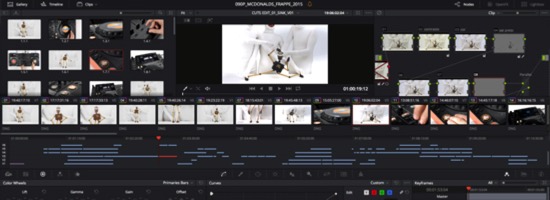
BB: Davinci Resolve is great for grading as we know. What was for O2 Filmes special (or not) to grade the footage from the URSA camera?
Paulo: We’ve shot RAW, it’s great because it enables a lot of small tweaks on the camera raw tab and we have a lot of freedom to manipulate the images.
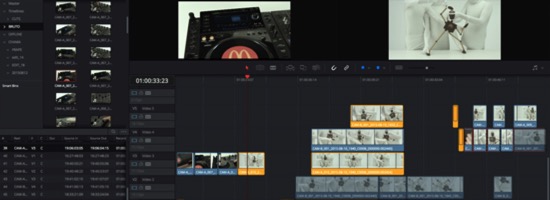
BB: Any surprising challenges in this production for McDonalds?
Paulo: The shot was supposed to be a one camera shoot, with the URSA, but we’ve decided to send the BMPCC 4K as an optional B camera, just in case the director wanted to do something handheld or get a few extra shots. The production ended up using both cameras almost all the time and that saved a lot of time in the shooting. Since the “B” camera was simple to assemble they didn’t require another camera crew for the B camera.
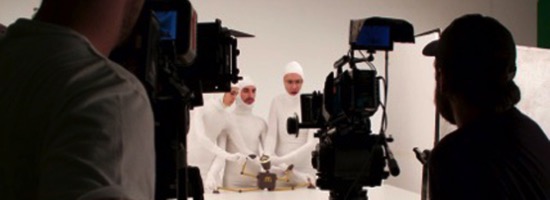
video of the final result:McDonalds Frappe
Like us if you want on Facebook, follow us on Twitter and Subscribe to our YouTube channel.
mentioned:
O2 Filmes : Website - Facebook - Twitter
Blackmagic Design : Website - Twitter
Expo & Conference - ABTA 2015

The ABTA 2015 takes place in a year that promises many challenges for the sector. The growth levels that Brazil, as a country and also in the broadcasting sector, experienced in previous years might not be shown this year, but there is a lot of development going on. At the same time, Brazil continues to receive investments of, for example, cable operators that are implementing new networks, and launching new satellites for Direct To Home (DTH) content delivery. On the programming front Brazil sees several launches of international and national channels, that will have to compete for space at the broadcasters. New companies are aiming at the national market, such as AT&T, with the acquisition of SKY's parent company, and Dish, which still has plans in Brazil.
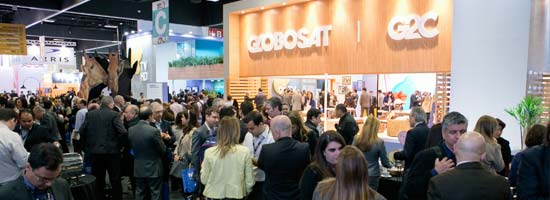
ABTA will take place in the Transamérica Expo Center in São Paulo (SP), on August 4, 5 and 6 , 2015. At the ABTA Conference, there will be debates on the future of pay TV, focusing on innovation in video services. Highlights at the event, will be technology showcases and content distribution solutions such as video on demand, IPTV and over-the-top platforms (OTT), as well as advertising, satellites and IT, and the innovations in linear and high-definition content distribution. Besides that, there are technologies and business in the field of video on-demand platforms, cloud DVR, new user interfaces and innovations in IT and access control.
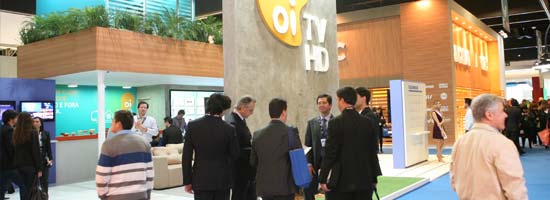
This year, there will be a large exhibition space with more than 100 exhibitors from Brazil and the rest of the world, using the opportunity to showcase brands and leverage new business opportunities. Last year, some of the exhibitors were:
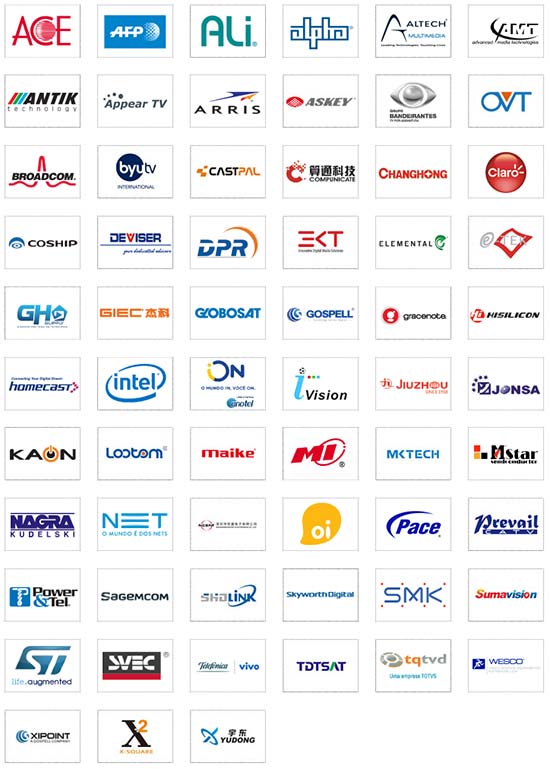
During the conference there will also be panels and discussions on markets, regulation, new technologies and trends, with the participation of executives and key representatives of industry and government. There will also be Pay TV Seminars (STA) with case studies and market solutions.
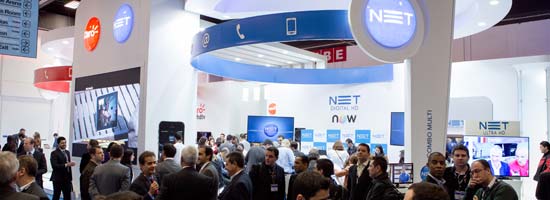
ABTA Expo & Conference has this year the following program:
Tuesday, Aug. 4:
PANEL 1: Sectoral policies and current challenges.
With the sessions: The present and future of the pay-TV market; Free-to-air channels: what changes with digital; The challenges of regulation in the non-linear world; Consumer rights, RGC and service quality; Rights, IP and financing in pay-TV programming; Signal theft: approaches and results
Wednesday, Aug. 5:
PANEL 2: Programming and regulation: results and adjustments;
PANEL 3: Pay TV, the media market and the future of advertising.
With the sessions: The performance of audiences and channels; New formats for advertising; Economic scenarios and growth: where the industry is heading; Pay-TV advertising success stories; Churn and customer loyalty: challenges of a competitive scenario; The future of pay-TV advertising
Thursday, Aug. 6:
PANEL 4: Non-linear TV: a concrete reality.
With the sessions: FTTH, satellite and OTT: directions taken by new operators; Lessons of international experiences; Broadband: strategies beyond bundling; Multiplatform programming.
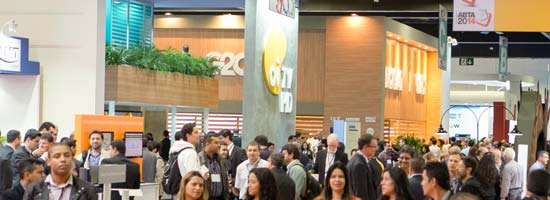
ABTA 2015 is expected about 9.500 people on average in the three-day event, 3.000 more than last year, with more than 10,000 square meters of exhibition space.
Transamérica Expo Center is located close to the city’s main business centers and office districts, and only 12 km from Congonhas Airport, with easy access to Marginal Pinheiros and Av. Washington Luis in Av. Dr. Mário Villas Boas Rodrigues, 387 Santo Amaro – São Paulo – SP – Brazil.
In YouTube Magazine TV channel you can view some of ABTA 2014 and what's to come in 2015.
video:
Info on lectures and more you can find accessing the official website.
We would like to thank Marcel Almeida for writing for us.
More info you can find on his LinkedIn: br.linkedin.com/in/marcelmg77/en or follow him on Twitter @marcelmg77
Like us if you want on Facebook, and follow us on Twitter and Subscribe to our YouTube channel.
mentioned:
ABTA 2015 Magazine TV
Interactive webcasting, a growing market in Brazil
Since the late nineties, Dutch company Connecting Media has been producing live webcasts from any location in the world. Dance-events, Corporate events, live streaming from nunneries, 24 Hours of Francorchamp + other races in Belgium and Netherlands , a lot of Freefight events in Europe are just some of the productions they did. They were the first to have a special OBvan for internet productions ( IFP - Internet Field Production ) and nowadays they work with Fly-away sets. After their first experiences streaming 2 music events from Holland and Budapest, they figured out there could be many interactive possibilities besides ”just” webcasting video. Especially compared to TV transmissions back then. In this interview, we caught up with the managing director of Connecting Media in Brazil, René Schaap.
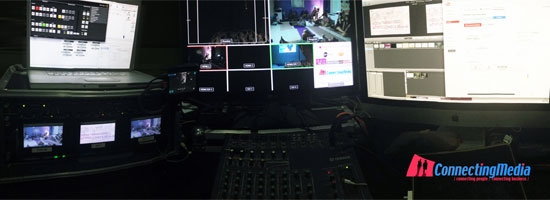
BB: What were your first attempts in making live streaming more interactive?
CM : We started simply with adding on-demand video’s next to the stream, during these live music events. Meaning that in a break or people could start to watch interviews with DJ’s that we made just 30 minutes before and edited and uploaded directly. People could also send us questions to the DJ’s so we could include these questions in the interviews. Our visitors loved that, because they felt like being part of the event even when they were not there. At later events in 2005, where speakers presented their company and innovations by using PowerPoints, we developed our Slide System. We found that, even though some speakers are stil working on their latest presentation minutes before they started, the best way was to get the presentation from them, and quickly batch convert the slides in our system to be able to switch them live besides the video stream on the event page. This meant more info for the viewer, and usually sharper and better quality of the slides.
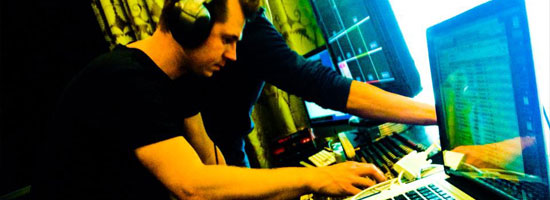
BB: The available bandwidth in Europe was growing last decade, did this bring more possibilities for live webcasting?
CM: Yes, we could make 5 different streams from one location for example… 6 years ago already. Microsoft was one of our first clients, and at an event we had live streams from 5 different areas where presentations took place within the building. On the Microsoft event page, you could choose what you wanted to see. Also uploading edited video’s next to the stream went better and better. We have to say that we did not raise the bitrate as much as the bandwidth increase allowed, always thinking about the available bandwidth of the possible viewers.
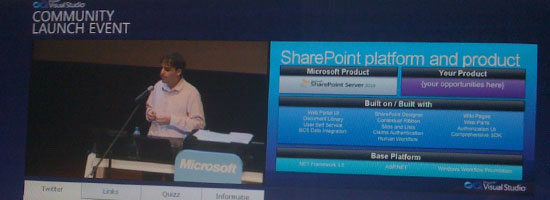
BB: What else did you develop?
CM: Our most used "module" is the Live-slides I mentioned earlier. Syncing PowerPoint slides live with the videostream. But we also integrated live GPS-tracking at sports events, where you could follow the position of sportsmen when they were not actual. Also polls, graphs and the possibility to ask questions during a live webinar and of course all kinds of social media integrations to communicate with the viewer. The latest is live camera switching by the viewers of the livestream, they will be their own TV director.
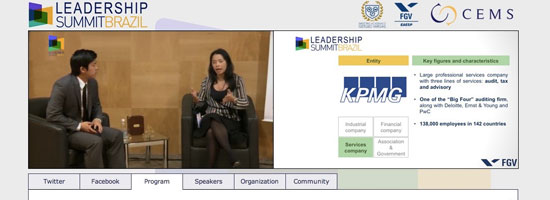
Besides the software we have always used specific hardware to optimize audio and video quality. We have 2 mobile webcast sets in Brazil. A small one for simple productions and an extended one for 6 camera’s. We work in HD, we can record the event in HD and make a short edit during the event itself. We have our own camera’s we can also integrate other signals and add the livestream to for example a LED-Wall or an OB / Satellite Uplink van.
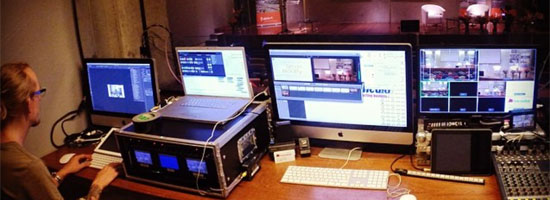
BB: Did you webcast in Brazil?
CM: A lot, I just will give some special examples. We started in 2008 to learn the market here, which is different than Europe. In 2011 we produced a live interactive webcast at an event for the FGV university in São Paulo named the Leadership Summit, and repeated this in 2012. At the MAM (Museu de Arte Moderna) we did a livestream for Sencity to another location in Rotterdam, The Netherlands where the event took place at the same time. Here our guys from the Netherlands sent us the live-stream from in Rotterdam, making it a two-way webcast with the possibility of artist performing at both locations. We also did a live interactive webcast for Urban Mobility in São Paulo. Besides the interactive webcasts we often have ”normal" livestreams for events and companies like Namaskar Yoga in Santos. Every month we stream the event Roda da Mães live on their YouTube channel.
BB: Did you encounter any difficulties when starting in Brazil, that you did not have in Europe?
CM: I would say ‘not more than in Europe’, although Europe is easier to connect because of the infrastructure. Like in Brazil nowadays we have had a lot of struggles with stable bandwidth with internet connections from some providers. When you have rain, it is even worse. In the most of Europe this is not much of an issue anymore. I think mostly it’s the fact that locations are not prepared for live streaming yet. I would rather see big event locations like soccer-stadiums, event-halls and conference centers, have a dedicated line especially for this. it would mean they can serve their clients better and interact more with the outside world. Act more like an event organiser, with better service they can control. We ourselves are using satellite uplinks more and more, if only for the fact that you have more ”ownership" over your connection. A dedicated internet line is as expansive almost as a satellite uplink truck in Brazil in which of course is very weird. An uplink truck can deliver a very stable connection, a dedicated line can still suffer from all the boxes, routers, patch panels between the location and the CDN.
Another thing in Brazil can sometimes be the language and cultural differences. Cultural differences are interesting and make traveling fun, but people should be aware of them and listen to each other to understand better. Our Brazilian co-workers speak English besides Portuguese. Because of our international clients, we cannot work with a crew that’s only communicating in Portuguese.

BB: Where lies the future for Connecting Media in Brazil?
CM: Of course doing more interactive webcast projects in Brazil, the companies and events are aware of our possibilities. Besides that we also want to extend and integrate our Broadcast, Web and Mobile solutions. Our business is just starting here but we already have some great partners and are positive about the future.
Like us if you want on Facebook, and follow us on Twitter and Subscribe to our YouTube channel.
mentioned:
Connecting Media : Website - Facebook - Twitter - YouTube - Instagram
Webcast Urban Mobility : Website
Webcast Campeonato Europeu de carabine e pistola de ar : Website
PANORAMA AUDIOVISUAL 2015
FAIR AND CONGRESS: PANORAMA AUDIOVISUAL 2015
May 2015 in São Paulo Expo (formerly Centro de Exposição Imigrantes), will occur the biggest event in the Broadcast & Cable segment in Latin America. The previous edition, in 2014, showed growth and maturity of the digital audiovisual market, with over 100 hours of training and more than 90 conferences related to the digital audiovisual industry, with over 1000 participants at the event.
Panorama Audiovisual is aimed at creative professionals, production and distribution of audiovisual content on the platforms like TV, film, radio, broadband, mobile and new media.
Since selecting a tripod for cameras, exhibition systems to transmission, Panorama Audiovisual works to provide qualified information which assist professionals in technical choices and equipments that ensure the best results.
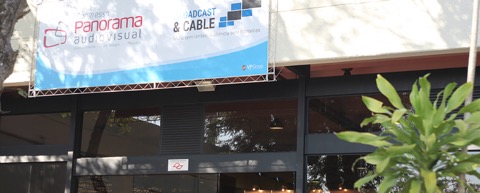
The congress offers reports, dossiers, analysis and interviews brought by professional experience, sucsess stories and reviews of new and basic technologies, with firsthand news.
Panorama Audiovisual is an editorial product of VP Group Integrated Communications, a company based in Alphaville (Barueri/SP, Brazil) and office in Miami (Floria, US) and Madrid (Spain). This structure allows the publishing of magazines and websites - world leaders in the segment, according to Google Analytics - covering Latin America and the Iberian Peninsula.
The president and CEO of VP Group said -- "This finding has encouraged us to expand the scope of the events we do, distributing them throughout the year."
The mission of the congress is discuss technologies and strategies that moves the Brazilian's audio and video market. Since the selection and operation of cameras and editing software to media monetization, every niche of this market will be treated in various discussion sessions, workshops and tutorials of the event this year. "In 2015, we will expand further this debate and the training and professionalisation programs", says Fernando Jay, director of the event.
"Therefore, it is fundamental an event like this, which encourages the professionalism of the entire industry and opens opportunities of updates and training for sector professionals to follow the latest trends of this innovative and dynamic market", says Victor Piiroja, President and CEO of VP Group.
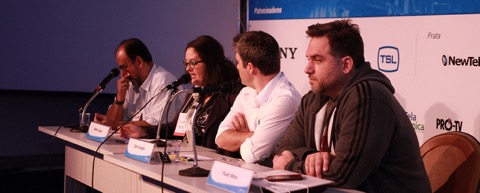
The main themes of the congress, dedicated to professional development and promotion of new technologies, will be solutions for production and distribution of audio and video on TV, film, new media, advertising, animation and games.
Among the topics, the themes are:
• Migration to 4K, H.264 and HEVC;
• Cameras and Lenses for Digital Production;
• Resources for Digital Cinematography;
• Recording in Multiple Codecs and Resolutions;
• Editing and Post-Production Systems;
• Color Correction and VFX;
• Applications for HDR and HFR;
• Automated Production of Journalism and Sports;
• Coverage of Competitions and Shows;
• New Lighting Technologies;
• Generation of Graphics and Virtual Sets;
• Integration with Social Media;
• Storage and Restoration;
• Media Management and Big Data;
• Cloud Based Services;
• TV Everywhere: Multiplatform Distribution, IPTV, VOD and OTT;
• Broadband and Pay TV;
• Infrastructure and Network Planning;
• RF Transmission, Satellite and FO;
• Quality Control and Signals Monitoring;
• Infrastructure for Technical Centers;
• Processing, Conversion and Playout;
• IP Based Production;
• Dispute of the Spectrum and the future of Broadcast;
• Analog Switch-Off and Digital TV Expansion;
• Radio in a scenario of Media Convergence;
• Interference and Wireless Networks;
• Transmedia, Connected TVs, APPs and Second Screen;
• Acoustic and intelligibility;
• Capture and Multichannel Audio Mixing;
• Immersive Audio;
• Loudness Control in Broadcast Ambience;
• Digital Cinema and VPF;
• Digital Projection Technologies;
• Education and Innovation;
• TV Series, Webseries and Interactive Narratives;
• Games and Animations;
• New Sources of Revenue;
• Incentive Laws and Fundraising for Audiovisual.
The existing sectors during Panorama show 2015 will be: Open TV, Pay TV, IPTV, Wireless Media, Radio, and Internet and streaming, Telecommunications, Satellite, Broadcast-cable, Digital Cinema, IT, 3D, Digital Signage, Education and Training
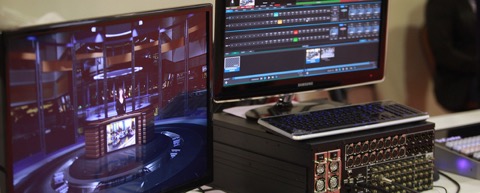
You can watch some videos of what happened in the previous edition:
We would like to thank Marcel Almeida for writing for us.
More info you can find on his LinkedIn: br.linkedin.com/in/marcelmg77/en or follow him on Twitter @marcelmg77
So we hope this is, besides, fun to read, also a good help and insight information about broadcast events held in Brazil and what the future may hold.
Like us if you want on Facebook, and follow us on Twitter
mentioned:
A Dutch EVS operator at Rio Carnival
A Dutch EVS operator at Carnival in Rio de Janeiro
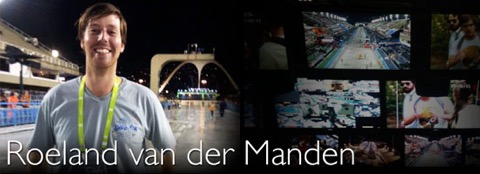
We all know Brazilian Carnival right?
We talked with Roeland van der Manden, one of the EVS Operators of last Carnival in Rio de Janeiro
BB: So Roeland, please tell us what is your function, and what does it include
Roeland: “EVS-operator. EVS is a system that makes live editing possible and makes replays at live events. I provide outside broadcast facilities with a premium service and it changes from a day to day basis. Some days I might be at a soccer game offering live replays to the director to then play out on live television to viewers at home, on another day I might be preparing for a live show taking all the pre-edited VT’s and feeding them into the EVS to then use as a tapeless method to play out to viewers at home”.
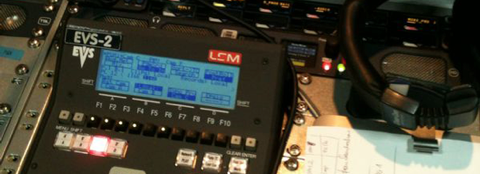
BB: Since when do you work as EVS operator
Roeland: “I have been working as an EVS-operator since 2008. Started in the Netherlands for Eyeworks and Endemol”.
BB: Which events did you already work on here in Brazil
Roeland: “I have worked for UFC coverages in Brazil since 2012, the Brazilian soccer championship, Libertadores Cup, world feed carnival 2014 in Rio de Janeiro and now I'm working for an American network at the IBC in Rio on the FIFA World Cup 2014”.
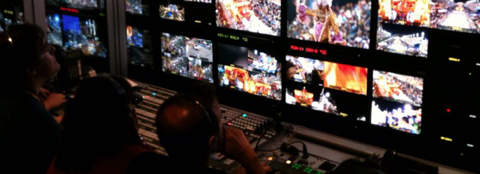
BB: What is the difference of the Brazilian events and events you worked on in the Netherlands
Roeland: “The difference between the events in Brazil and in the Netherlands is production and care. In the Netherlands, productions are bigger and made with more care. They do have all the equipment in Brazil to make events look really good but I think some of them maybe don't care enough to give it 100%. There's a lack of perfection at certain events. And planning is a big difference. For example, in Brazil I have never received a callsheet or any other useful info about the production. Even though many times things turn out to be fine "the Brazilian way”.
BB: How is communication with foreigners in general in your work
Roeland: “Communication has to be very good when working in EVS because a big part of the job is communication between director, producer and EVS. And most of the time communication has to be fast, because you work live”.
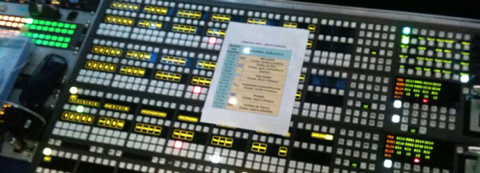
BB: What are the good and bad parts of Brazil as event host
Roeland: “Good part of the Brazilians is without a doubt the warmth character of the Brazilians. They are really open and enthusiast and there is always joy.
Any bad points would be the planning and the way they care about the production”.
BB: Do you notice a difference in foreign culture and your culture, in the way of working especially
Roeland: “A big difference in the two cultures is discipline and punctuality I think. Dutch people are very strict when at work. Brazilians are not. In Brazil it's very common that your colleague is a very good friend of you, in the Netherlands there's a clear difference between colleagues and friends. The majority of the cases at least”.
BB: How was it working on the last Carnival in Rio de Janeiro
Roeland: “Working at carnival was really spectacular. Like I mentioned before about the differences in size of the productions and care, you can compare the carnival for Globo with a great international event. I was very positively surprised”.
BB: Any specific technical difficulties during this event, and if so, these were due to what exactly
Roeland: “Work itself was normal at this event. We worked on the ultra slow replays which turned out to be very beautiful to show details about dancing. Very nice”.
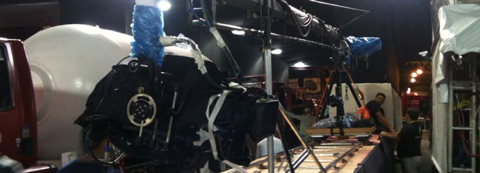
BB: Where there foreign broadcasters involved during the transmission
Roeland: “I believe not, the TV compound was from Globo only although the compound was quite big though”.
BB: What did you work on specifically during Carnival
Roeland: “We worked with the ultra slow replays of the dancers to show details and ordinary replays of the samba schools”.
BB: Which equipment did you use
Roeland: “EVS XT3. The newest model of EVS. And I-Movix”.

BB: Do you see a rise in the amount of (english speaking) Brazilian Broadcast Technicians needed during events in Brazil, and in which specific areas
Roeland: “Not really, this year you do but that has everything to do with the World Cup which is once. So not repeatedly I think”.
BB: Any good advice for the Brazilians in this area
Roeland: “It is always useful and of course important to be able to communicate in English”.
BB: How do you see the future for Brazilian broadcast Technicians the coming years with all upcoming foreign events
Roeland: “I think the Brazilian market is not going to change that much. The reason is because there are several big companies who provide their own services. There is not much of a freelance culture as there is in the US or Europe. People here prefer to work for a company instead of having their own business I think. So the market is not that competitive. There is Globo which owns almost all the channels here and than there's a long time nothing and than the rest.
But people should give their very best to show the international media out their that they're capable of producing big events”.
BB: What is the most important for you to be able to work with foreign companies
Roeland: “Foreign companies pay way better than the Brazilian ones. That for sure is an issue, further the production level is higher which makes it easier to work with them. Brazilian production level is not poor, but it's done by way less people so the conditions are harder and you can see that in the result”.
BB: Any other interesting things you have for us related to your work at last Carnival in Rio de Janeiro
Roeland: “Carnival was hard working but very satisfying and I really enjoyed it”.
Compilation of Carnival Rio de Janeiro 2014
So we hope this is, besides, fun to read, also a good help and insight information about broadcast events held in Brazil and what the future may hold.
Like us if you want on Facebook, and follow us on Twitter
mentioned:
Carnival Rio
EVS
I-Movix
FIFA worldcup 2014
Eyeworks
Endemol
TV Globo
UFC
Video News Ocean Journey The Oosterschelde
Video News Ocean Journey The Oosterschelde
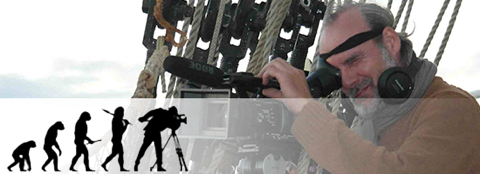
Route Brazil - South Africa 1st of April 2013 - May 2nd, 2013
Assignment: a video journal of a long ocean voyage about the life and atmosphere on board for six weeks . A Dutch three-masted tallship
The Oosterschelde from 1918 on a world trip along continents and historical VOC routes, from Rotterdam to Rotterdam.
After 26 years a former classmate from the Academy of Journalism nosed out that I, as journalist-filmmaker, live in Brazil and submitted me the following challenge ...
For a 13-episode documentary series for Dutch television we are looking for an adventurous director-videographer who can film independently, interview and edit on board. “You will do it for the adventure, because budget is tight, but expenses are paid and we will feed and accommodate you onboard”.
Well... a typical once-in-a-lifetime opportunity... crossing the Atlantic on an old Dutch schooner …. ?
A quick look at my calendar for the next few months , a few phone calls to my customers with long-term film projects ... and the decision came in an instant wink .. I grab my suitcase and prepare my camera kit !
Santos (BR) - Cape Town (SA)
This ocean voyage is known as one of the longest and hardest routes that the Oosterschelde carries on this world of 1,5 years. The route takes from the subtropical waters of Santos towards South Africa’s Cape Town, around the Cape of Good Hope. During this long crossing the authentic Dutch three-master must stand various challenges, the conjunction of two trade – currents; the tropical trade wind meets cold trade from Antarctica on the 35th and 40th parallel .. and that guarantees fierce storms and high waves, and all at an ocean depth of 5 kilometres.
Total distance of up to 3,500 miles, or 6,880 kilometres. This requires a strong western wind which should bring the three-master towards its eastern destination. But to find it, one must navigate to get there.
But before Cape Town will be reached, a secure check of the list needs to be done of what to bring. For more than a month at sea with full gear , you cannot afford to forget that one charger or cable!
Check... Enough batteries, rain gear for the camera , lens cleaner for the inevitable salt deposits, sufficient terrabites on the backup disks, since I will be shooting each day and everything in full HD.
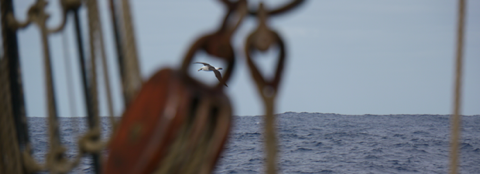
STORM
Just 50 kilometres off the coast of Santos, I already get my pick, force 9, rising to 10 Bft ... and that means storm!
Not knowing how often we were going to go through such a hell , I film just to be sure ... at least, as much as possible to maintain your standing and to avoid the big waterspouts across the deck. Filming on board a sailing ship
under those circumstances, staring through your viewfinder, provides a different perception of the reality around you. And that's tricky. Everything that is not fixed on lower and upper deck, thunders from baking to starboard.
And that goes for me as well, because ‘man overboard' really means overboard, and no one who can save you.
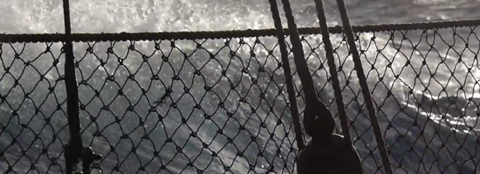
MOST REMOTE ISLAND IN THE WORLD
Highlight of the trip; halfway through the journey is the world's most remote island of Tristan da Cunha. With 2,265 miles on the map a stopover is scheduled here. The volcanic mountain in the middle of nowhere measures only 15 square kilometres and 2,060 meters high, counts just 260 inhabitants in almost complete isolation.
This colonial island that was discovered by the Portuguese in 1505 but eventually annexed two centuries later by the British. The island has a reputation of a ship graveyard, because the almost impassable coast and waves here over the centuries costs a lot of shipwrecks . If I succeed to go ashore, I 'm going to get a stamp in my passport first.
LAND IN SIGHT
After 15 days at open sea .. finally .. land in sight. It would be strange to feel land underneath your feet again. But unfortunately .. our party is negated by the local authorities of Tristan. The weather is not cooperating. It's too dangerous to dock at the island. So after a full day and night to float around in the hope that it would clear again around, we finally set sail for Cape Town . Disappointment among the guests and crew, but for me moments again for nice shots and quotes for the script.
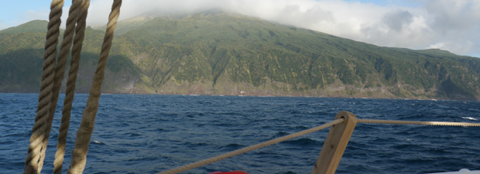
Standing up editing
At the end of the day when people are asleep or on a watch, I upload my footage to the backup. My cabin is not big enough for a small editing set installation, so sometimes you stand in front of your marine cage or improvise a quiet spot below deck to spot and assemble an edit timeline.
The days that follow to Cape Town under favourable weather conditions I interviewed the 12-member guest and 6 crew. Interesting to hear from each about his or her background for this project and their passion for ocean sailing.
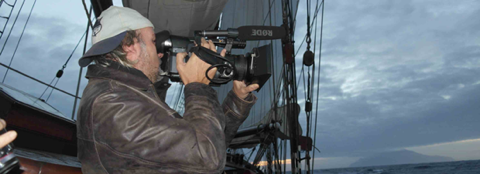
KILL YOUR DARLINGS
After more than a month, at a beautiful dawn we see the first outlines of the South African coast… Cape Town... we made it! The storms that would follow repeatedly during the trip, I and my gear overcome.
For the upcoming 15-minute episode I have more than enough terra bites of shots. So now up to the final montage and 'Kill your Darlings ...’
Filmmaker – director Ernst Daniel Nijboer
Visuals Studio Brazil
video:
mentioned:
Visuals Studio Brazil
TallShip de Oosterschelde
Tristan da Cunha
Authorization for Filming in Brazil
Authorisation for Filming in Brazil
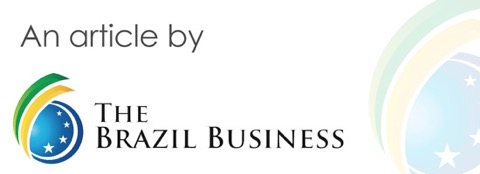
Foreign companies that want to film in Brazil need special documentation to do so legally. Read the article to learn what documentations are needs to be provided to act within the law when filming.
Foreigners who intend to make news reports, films, recordings or capture moving images in Brazil (with or without sound) have to previously ask for ANCINE's authorisation. ANCINE is short for Agência Nacional de Cinema, the national movies agency that is responsible for inter-mediating at the Brazilian diplomatic missions abroad, the requests for proper visa concession for technicians and artists, so they can participate in filming in the country.
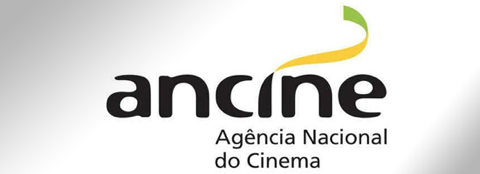
How to Request Authorisation
Apart from foreign journalistic productions, all of the others have to contact a Brazilian production company that will make contact with ANCINE. First, the Brazilian company communicates with ANCINE about its interest and responsibility in making the films or recordings, through a form available in this link. It’s also necessary to present the following documentation:
• Copy of the contract between the foreign production company or person that is legally responsible for the production, and the Brazilian production company, and should indicate the mutual responsibilities, form of payment and the expiration date of the contract.
• Copy of the translated contract mentioned, if it was written in a foreign language.
• Provisional plan of filming/recording, indicating the dates and the places (Municipality/Federal Unit) in the Brazilian territory where the works will happen.
• Copy of the identification sheets of the passport of each one of the foreign workers.

The Brazilian company will be the one responsible for making the customs clearance of all the temporary material used for the production, giving full support to the foreign company.
Any alterations in the originally established conditions have to be reported to ANCINE through a form available in this link. It’s also necessary to present the following documentation:
• Change in the Brazilian diplomatic mission to which the visa request is destined.
• Inclusion or exclusion of technicians and artists.
• Deferral/alteration in the temporary stay term of the technicians and artists in the country.
• Change in the places where the filming/recording will take place.
• Cancellation of the authorised activity.
The visa is issued abroad, on the Brazilian diplomatic missions, once ANCINE approves the concession of visa and provisional stay in the country.
The validity of the visa is determined by the mission, according to the length duration of the filming/recording chronogram.
It may also be necessary to ask for an authorization from CET, the Companhia de Engenharia de Tráfego, which is the Traffic Engineering Department, in case the filming is happening in some street. There are different authorisations in this case, whose prices vary from BRL 148.95 to BRL 1,747.45. The complete table of services is available in Portuguese, here, under the title “Filmagem, fotografia, produção de audiovisuais e similares”, which is filming, photography, audiovisual production and similar.
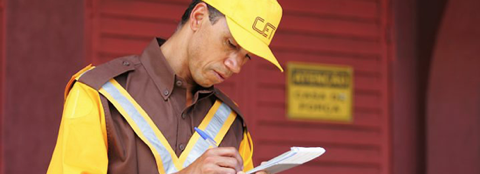
Some cities may have specific forms which must be filled in order to provide the authorization for filming, which must be checked at the City Halls.
Journalistic Productions
The production of foreign audiovisual journalistic works have to be communicated straight to the Brazilian diplomatic missions abroad, so that the proper authorisations can be issued. In these cases, the people going to Brazil to work can apply for a temporary visa as foreign newspaper, radio, television or agency correspondents. There may be internal demands, for instance, a special authorisation to film in a hospital, but these are local specifications, not migratory ones, and need to be checked in the specific places where the filming will occur.
A big thank you goes to our friends at The Brazil Business who were so kind letting us use this very informative post.
Be sure to check the Broadcast Brazil Facebook page and LIKE us.
Lot's of news, photo's and info for broadcasters, webcasters and mobile producers in Brazil.
Brazilian Cinema and International Events
Brazilian Cinema and International Events
Most of the foreigners might have never heard from ANCINE, well that is not that strange since it is the government institution for Cinema.
For 2014 this institution applied new rules in terms of promoting and stimulating national cinema outside of Brazil, which is great!

Here some more information about the publication made by ANCINA
"ANCINE publishes rules to support the participation of films, projects and professional programs in international events in 2014.
This Program supporting festivals shall also include projects in workshops.
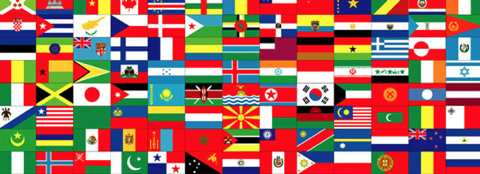
Aiming to encourage the promotion of Brazilian audiovisual production abroad and increase the participation of Brazilian companies abroad in the audiovisual market ANCINE renewed it's program for the year 2014, with two support programs aimed at the international area.
These programs seek to contribute and facilitate the participation of national films and projects at major festivals and workshops of the international cinema, besides also the participation of the sector in market related events and business meetings.
"We believe that the format they will implement this year, through the extension of both programs will allow a more comprehensive role in enabling the presence of Brazilian companies and professionals in major international events in the audiovisual sector. There is a complementarity between the three lines that make up the programs because they make us understand the development and presentation on one hand, and the negotiations in order to produce and make the product move in the international market, "said Rosana Alcantara, director ANCINE.

The Support Program Participation of Brazilian Movies at International Festivals, launched in 2006 by ANCINE, assists with financial services and resources, depending on the event, for the participation of short, medium and Brazilian feature films selected for festivals abroad. Starting this year, the program shall also include financial support for selected projects for international workshops
The International Advisor for ANCINE, Eduardo Valente, justifies the inclusion of laboratories/workshops in the program with the assessment that "these events today have outstanding importance in the international projection of work and increasingly curators go to these events to invest in these works. With this increase, the total number of events in the program reaches 107, throughout the year."
This way we see that the audiovisual market is not only expanding one way, which is mostly foreigners coming into Brazil, but that we can expect the coming years a rise of Brazilian products and professionals appearing in the foreign markets as well.
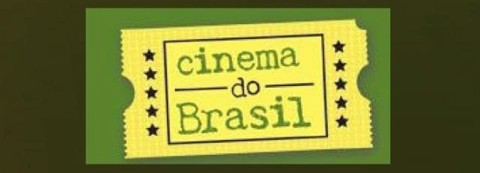
Great news, because this will stimulate the international market for Brazil and in the coming years prepare the Brazilian audiovisuals even better for the Olympics.
On this site you can read more about the program, it is in Portuguese but Google Translate will help out pretty well ;-)
Mentioned:
ANCINE
Interview: Max Noach from SSL

We had the pleasure of meeting Max already a couple of times during fairs in Brazil at the SSL booth, he was so kind to do an interview with us about his work at SSL and his point of view on the Brazilian market.
BB: Tell us who you are Max
Max Noach: “I am a Dutch citizen, born in Belgium and educated in French. I spent 10 years living in the UK when I first joined SSL in 1992, and have been living in Brazil for 10 years now.”
BB: What is your occupation
Max: “I am the Area Sales Manager LatAm for Solid State Logic”.
BB: How long do you work for SSL
Max: “I worked from 1992 to 2002 in various sales roles, and rejoined the company in February 2013”.
BB:How long do you work in the South America region
Max: “Since December 1992 - coming close to 21 years now”.
BB: How long does SSL exist, and how long in Brazil
Max: “SSL was founded in 1969 in Stonesfield, Oxfordshire, England, UK. The first SL 4000 G console was installed in Rio de Janeiro in 1989 (that commissioning engineer, Niall Feldman, still works for SSL and is now Director of New Products) and we pro-actively started working in Brazil in 1993”.
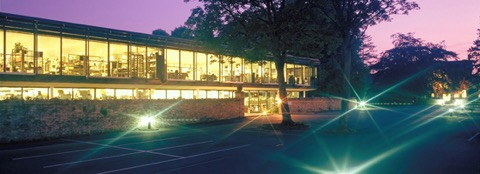
BB: Which product is most popular in Brazil
Max: “Difficult question to answer. Over the years, we have produced a wide range of products for a variety of applications. If we were to consider sheer unit numbers, I guess that Matrix and X-Rack win the trophy. If we were to look at turnover, Duality is the winner. These numbers might be superseded in the near future with the introduction of Live, our newest console for live sound applications”.
BB: Did you see a growth in audio/video related material in Brazil
Max: “Sure! With the advent and expansion of cable TV, digital terrestrial TV and web-streaming, we have witnessed sustained and continuos growth in this sector of the industry”.
BB: Which section in the audio/video market is strongest for SSL in Brazil
Max: “Our company and solutions traditionally attend to the upper tier of the market, i.e. large shows, complex sport events, mobile units requiring high capacity and quality audio”.
BB: We saw you at the AES and Broadcast&Cable, which other fairs in South America people and businesses can find SSL
Max: “We have attended local trade-fairs in Chile over the past 2-3 years. We are looking at exhibiting at ExpoMusic in 2014, Caper in Argentina, and a show in Colombia. We regularly organize workshops and roadshows with our local partners”.
BB: How is business and sales different from Europe & USA in Brazil
Max: “To state the obvious, custom duties and taxes, as well as the exchange-rate instability make it difficult for anyone to plan anything here. Also, the political and economical situation is very different in Brazil from more traditional markets such as the USA or the EU. This influences not just SSL's business, but nearly all sectors of the economy, making forecasts and planning almost "black science".
BB: Is the english language still a problem in communication
Max: “Yes and no. Yes if one considers the average fluency in English of the people we deal with on a day to day basis. No, because companies in South America require that their top managers possess a decent command of English. At SSL, we beg to be different: I'm fluent in both English and Portuguese, and my Spanish is up to a decent standard (I won't mention Dutch or French, only relevant in a couple of countries in South America)”.
BB: Are you partnering with other foreign companies here in Brazil
Max: “No. Our partners in Brazil are all established in Brazil”.
BB: How do you see the broadcast market in 2014 due to world cup
Max: “We see opportunities of course. Not just in the Broadcast market, but also in the Live sound market thanks to the many parallel events that will happen during the World Cup”.
BB: Which company is your biggest opponent in Brazil
Max: “I wouldn't say “opponent”. We have competitors, of course, as any company would. They tend to vary according to the projects and the markets - I couldn't per se qualify one as the “biggest” either”.
BB: Any surprising challenges in Brazil
Max: “As you may well know and have experienced yourself, Brazil is a territory with many challenges. After our 20+ years experience in the country, anything hardly surprises us anymore. And when it does, it tends to be in a positive way”.
BB: Are there new upcoming products you can tell us about
Max: “We just revealed two new broadcast products at IBC: the first Madi-Dante Bridge designed for Broadcast applications and the LMS-16, a revolutionary high-capacity loudness monitor that works together with our products or that can integrate as a stand-alone unit in broadcast installations.
SSL has a life-long history not revealing upcoming products before they are ready to be demonstrated and ready to ship. But we are having good news for you all.
There is close to a week left before the AES in New York and SSL will have 5 new products, yes, 5! Each of them worth the travel.
For Musical Production, we will have the Matrix2 and Sigma
For Live Sound, the Live, seen first time at the fairs in America
For Broadcast, our new Madi-Dante bridge, and the LMS 16, Loudness multichannel monitor.
Besides this, we will have the Duality ProStation, the C1- HD with V4, an AWS 948, Nucleus and of course our range of Converters and effects/processors at our stand.”
To register for the fair you can click here. To mark a SSL demo, click here
Be sure to check the Broadcast Brazil Facebook page and LIKE us.
Lot's of news, photo's and info for broadcasters, webcasters and mobile producers in Brazil.
mentioned:
SSL
AES
Expo Music
Caper
Broadcast & Cable
IBC
Remittance of International Payments
Remittance of International Payments

Brazil is a new investment target, but the country still presents many problems for investors that want to participate in the Brazilian market. This article outlines these problems and also proposes solutions to make business in Brazil a clearer and more successful process.
Brazil is a developing country in ascension with many attractive features for investors. With a vast territory full of natural resources and opportunities for expansion. In addition to the growing Brazilian economy and the increasing purchasing power of the population, the country has caught investors attention worldwide. Making Brazil a very appealing area for foreign financial transactions.
Business Environment in Brazil
A recent report developed by the World Bank ranked the economies of 185 countries according to the ease of doing business. From 1 to 185, the countries are classified in accordance by their regulatory environment for starting a new business.
If the environment is favourable to open a business or a new business operation the ranking is lower, closer to 1, and if the regulatory conditions are unfavourable the ranking is higher, closer to 185. Brazil was ranked 130th, a poor result in comparison to other South American countries, such as Argentina (124th), Paraguay (103rd), Uruguay (89th), Peru (43rd) and Chile (37th).

Problems to be Confronted
The low position of Brazil in the study can be explained by the number of necessary days it takes to open a business in the country. In Peru it takes 60 days and in Chile 32, while in Brazil the whole process can be completed in a staggering 156 days.
The Bureaucracy Barrier
It is clear that bureaucracy has decreased the ease of doing business in Brazil. Even though the country has become an important target for foreign investments some Brazilian problems cannot be ignored.
The country is a victim of a system of administration with many divisions, rules, controls and redundant procedures that, most of the time, are unnecessary for the opening of a business.
The bureaucracy in Brazil can be so overwhelming that even Brazilians get confused. This type of system nurtures the idea that every procedure in Brazil takes much longer than it should actually take and also diminishes the government's efficiency.
Delays and Clearer Contracts
Not only is their unnecessary time spent on opening a business in the country, there is also a problem for investors in Brazil. Payment can also be an issue, especially regarding delays. Brazilians are recognized worldwide for their ability to be late and unfortunately this ability can be also perceived in payments and in financial remittances.
Not all Brazilians have this problem, but in order to be cautious, the establishment of a good contract with explicit and verified information is the best option to guarantee the success of any type of business in Brazil.

Avoiding Complications with Bank Transfers
To avoid any type of trouble when doing business in Brazil it's important to understand how Brazilian banks work. Just like in any part of the world, banks in Brazil work with digital systems and systems don't always recognize mistakes.
For a financial transaction in a bank to be processed correctly, it is necessary to present the exact information that the bank requests. To be sure that the information requested by a bank is the same provided by the person that is sending the money, double-check the information is the most advisable option.
Razão Social and Nome Fantasia aren't the Same Thing
The lack of information or errors is a normal complication encountered by legal entities, on reason is due to the fact that in Brazil companies have two different names: Razão Social and Nome Fantasia. This part could be tricky for foreigners, since Nome Fantasia and Razão Social aren't universal terms. Both are nuances of Brazil therefore being unknown terms abroad. However, the knowledge of their meanings is fundamental to guarantee the success of a foreign payment.
• Razão Social: It's the nome comercial, denominação social or firma empresarial, which means the name with the company as it's registered in Brazil.
• Nome Fantasia: The name which the company is commonly known as, which can also be called the nome fachada or marca empresarial.
Example: McDonald's is a fast food restaurant popularly known by its Nome Fantasia, McDonald's. The Razão Social of McDonald's is registered as Arcos Dourados Comércio de Alimentos Ltda.
Usual Mistake
To money transfers by a company must indicate the Razão Social in the bank system. The biggest mistake made by foreigners is that they usually send their money with the Nome Fantasia of the company, which hinders the data matching of the bank system. If the information submitted by the foreigner doesn't correspond to the data registered in the bank the transaction will not occur, and the money will be returned to the sender or remains with the bank.
The info graphic below here shows ways to Send money to Brazil or to Abroad
We hope this information helps to give you a better understanding about the financial world and doing business in Brazil, and if you would like to read more articles related to this, let us know!
A big thank you goes to our friends at The Brazil Business who were so kind to write this for us.
Be sure to check the Broadcast Brazil Facebook page and LIKE us.
Lot's of news, photo's and info for broadcasters, webcasters and mobile producers in Brazil.
UFC in Rio de Janeiro
UFC in Rio de Janeiro
The 2nd and 3rd of august BroadcastBrazil was in Rio de Janeiro, Brazil, at the UFC event.
We talked with Fernando Figueira, one of the Camera Operators of this UFC show, and had the chance to ask him some questions.
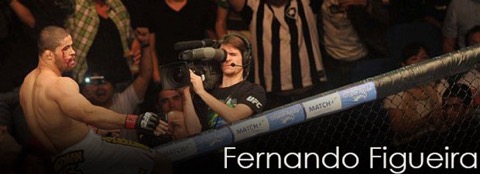
BB: So Fernando, please tell us what is your function, and what does it include
Fernando: “I am one of the Hand Held Camera Operators for the UFC events in Brazil”.
BB: How many shows are you on UFC in Brazil
Fernando: “I have worked at all the UFC Shows in Brazil, except the one that took place in Fortaleza”.
BB: What is the best part of the UFC events
Fernando: “The best part of the UFC shows is to be able to work with good professionals from all over the world”.
BB: What is the difference of Brazil and other countries at UFC events
Fernando: “At the UFC everything is detailed and structured. We receive a minute by minute script on each show, what makes our life much easier”.
BB: How is communication with foreigners in general in your work
Fernando: “ I am used working with a lot of foreigners, so I don't have any issues on communicating with them and I also made really good friends at those events”.
BB: What are the good and bad parts of Brazil as event host
Fernando: “UFC is getting bigger and bigger each day in Brazil, so hosting an event in different cities of the country will help it get even more popular.
The most difficult part of hosting international events in Brazil is to gather a good English Speaking Crew. We do have a lot of good professionals in the TV area but not all of them speak and/or understand English”.
BB: Do you notice a difference in foreign culture and your culture, in the way of working especially
Fernando: “On TV, all the engineering is the same. Sometimes we have to change the way things are done to accomodate a specific request from a different way of doing TV. But, as I mentioned, technically the process is the same all over the world. What really matters is the final result and a happy and satisfied client, no matter where they come from”.
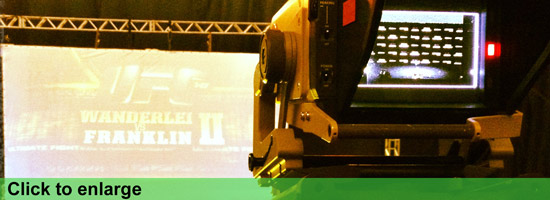
BB: Any specific technical difficulties this last UFC, and if so, these were due to what exactly
Fernando: “No specific problems at any of the UFC events”.
BB: Any good advice for the Brazilians in this area
Fernando: “It is very important to learn a second language, preferably English, due to the upcoming events in Brazil”.
BB: Do you see a rise in the amount of (english speaking) Brazilian Broadcast Technicians and Cameraman needed during the UFC in Brazil, and in which specific areas
Fernando: “ Till today it is still very hard to gather an english speaking crew here in Brazil.
BB: How do you see the future for Brazilian broadcast Technicians the coming years with all upcoming foreign events
Fernando: “Brazil has a really good future since we will have big events as the World Cup and Olympics. We are getting more investments in the area and that makes this kind of work stay even after these events”.
BB: What is the most important for you to be able to work with foreign companies
Fernando: “We are always learning, so be able to work with people from all over the world only brings more knowledge”.
BB: What kind of gear do you use
Fernando: “On UFC shows we work with an OB Van with 16 Grassvalley HD Cameras and 5.1 dolby áudio”.
BB: Any other international events you did this year? If so which ones and what was your function there.
Fernando: “I did the World Youth Day in Rio de janeiro where I worked as Producer, also I did Pororoca Live for CCTV China as an Transmission Coordinator”.
World Youth Day:
Pororoca Live Event, behind the scenes:
So we hope this is, besides, fun to read, also a good help and insight information about foreign broadcast events held in Brazil and what the future may hold.
More photo's available on our Broadcast Brazil Facebook page, you can find them here.
Like us if you want ;)
And see our former blogposts about the UFC event held in Belo Horizonte, Jaraguá do Sul and Fortaleza
mentioned:
UFC
GrassValley
Pororoca
World Youth Day
CCTV China
Interview: Marcio Zukin, CTO SimTV
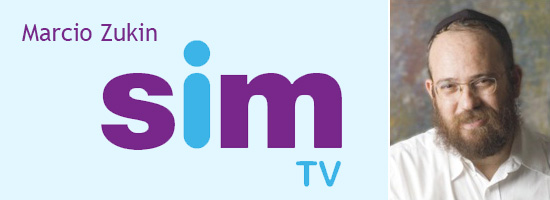
IPTV News Editor Jamie Beach interviews Marcio Zukin, CTO of Brazilian over-the-top video service Sim TV, on plans to move into transactional and ad-supported offerings, the television services that Brazilians value most, and the opportunity created by pay-TV piracy.
Marcio will be speaking at the TV Connect Latin America 2013 event taking place in São Paulo on 2nd-3rd July. For more information and to register, please visit latam.tvconnectevent.com
Jamie: Can you tell us a little about SimTV’s connected TV initiatives to date?
Marcio: Our connected TV initiatives include subscription VOD and live TV. SimTV was designed for delivery on every kind of device and also through an IP Box.
Eventually the platform will be developed in order to feature transactional and ad-supported services.
The focus of the project was to provide a very robust solution, using adaptive bit-rate technology, CDN networks and global data centres in the cloud, in order to deliver the best interface and a user-friendly workflow to the customer.
Jamie: What do you think Brazilians value most in a television service, beyond linear programming?
Marcio: There is a need to differentiate between content and service. In terms of content, Brazilians in general value football games and sports, movies, kids programming and comedies or sitcoms.
Regarding services, Brazilians value innovation, programmes with social comment and interaction, and which are up-to-date and available on a 24-hour basis.
Jamie: How big a problem is pay-TV piracy in Brazil?
Marcio: Pay-TV piracy in Brazil is not a problem, it is an opportunity, and a big one.
Let me explain. In my opinion, people turn to piracy for a number of reasons, almost as an ‘after the fact’ event.
If people would have a service, with reasonable quality, at an affordable and fair price, with dependability and good customer care, there would be no need to resort to illegal practices regarding pay-TV.
Many initiatives have already demonstrated this vision.
Jamie: What growth opportunities can you see in the pay-TV market?
Marcio: The pay-TV market has huge growth opportunities, in volume and quantity. Various industry surveys project that there will be 4.4mn active clients for IPTV services by 2017 in the Latam countries alone.
A huge variety of content and types of service is emerging: for example, an Italian that lives in Rio could watch live an Italian game in Recife at his tablet, early in the morning while still in bed.
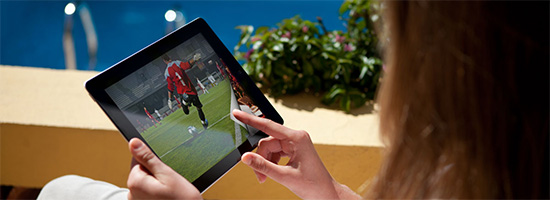
Then a few hours later he could be watching a recent specific Italian movie back in his apartment simultaneously (in a social network) with his friends that live in Italy.
While watching the movie, he uses the tablet as a second screen not only as a remote control but also to buy something that appears in the movie in an e-commerce site, or get more information on historical events related to a character of the movie, post a note on Facebook, and so on.
Event video:
Be sure to check the Broadcast Brazil Facebook page and LIKE us.
Lot's of news, photo's and info for broadcasters, webcasters and mobile producers in Brazil.
Mentioned:
Sim TV
TV Connect Latam
UFC in Fortaleza
UFC in Fortaleza
The 6th till 8th of june BroadcastBrazil was in Fortaleza in the state of Ceará, Brazil, at the UFC event.
We talked with Marcio Moreira, the Image Director of this UFC show, and had the chance to ask him some questions.
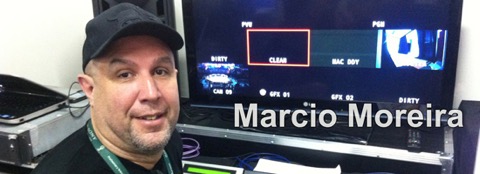
BB: So Marcio, please tell us what is your function, and what does it include
Marcio: “I am an image director and to get here I learned photography, Studio and external camera, graphics, video control cameras and also followed the work of other directors in the most varied areas of tv production”.
BB: How many years are you on UFC
Marcio: “I don’t know exactly the years, but till now I have done 5 UFC shows here in Brazil”.
BB: What is the best part of the UFC events
Marcio: “There is not e specific ‘best part’ at the event. The production for sure is great and very well organized. It is an event full of highly trained professionals”.
BB: What is the difference of Brazil and other countries at UFC events
Marcio: “Working also with music shows, live tv programs, and sports in General, the difference is the way of working with the Americans.
Everything is well rehearsed and scripted”.
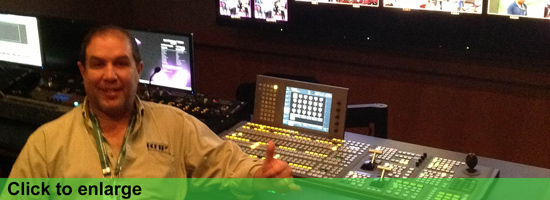
BB: How is communication with foreigners in general in your work
Marcio: “My communication is very good due to speaking English. We talked about the whole operation of the switcher and the camera movements before and during the events so there were no doubts left”.
BB: What are the good and bad parts of Brazil as event host
Marcio: “Brazil is a very big country. Has a geography very differentiated from other places and has a very large number of spaces for this type of event. The problem is that the best work and venues are located in urban areas and with many local rules, such as for example the city of São Paulo that has a time limit for a big event to end. In Brazil we have a lot of good professionals, but most of them do not speak a second language”.
BB: Do you notice a difference in foreign culture and your culture, in the way of working especially
Marcio: “The main difference is the way the event is produced. All those involved are very professional and organized”.
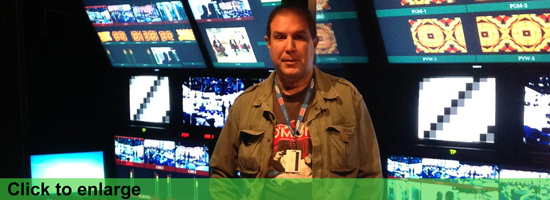
BB: Any specific technical difficulties this last UFC, and if so, these were due to what exactly
Marcio: “In the operating area I had no problem”.
BB: Any good advice for the Brazilians in this area
Marcio: “One advice that I can give to professionals in this area is to learn foreign languages, because we are having more and more international events”.
BB: Do you see a rise in the amount of (english speaking) Brazilian Broadcast Technicians needed during the UFC in Brazil, and in which specific areas
Marcio: “I realize that the need for professionals is very high in all operational areas, but having professionals for these areas that speak english is still very difficult”.
BB: How do you see the future for Brazilian broadcast Technicians the coming years with all upcoming foreign events
Marcio: “I see a good future for the Brazilian technicians. I believe many invest heavily in operational expertise, given the demand”.
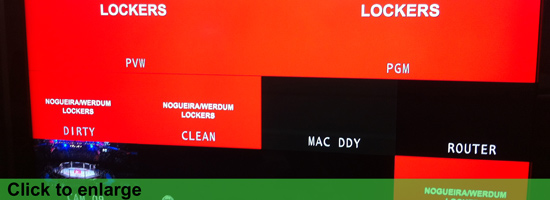
BB: What is the most important for you to be able to work with foreign companies
Marcio: “To have a lot of knowledge in the making. Always do your best. Cooperate and work as a team”.
BB: What kind of gear do you use
Marcio: “My equipment is the Switcher that has several video signals and graphs that are used during the event”.
BB: Tell is some more about this equipment/brand/type
Marcio: “The equipment tends to be Sony or GrassValley with 8 video outputs at least, 2 key-ers and 2MEs”.
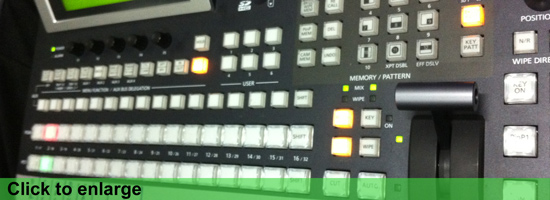
BB: You work both in Sao Paulo and in Rio, do you see already a difference in the Broadcast field in these 2 cities, if so in which way?
Marcio: “The professionals of the two cities meet the needs of all types of events. The difference is that in Sao Paulo, the number of events is greater”.
BB: What kind of events do you prefer to work on, sports, live music etc..
Marcio: “I like to work in all sports and mega musical shows, nationally and internationally”.
And of course, do you have other interesting notes to share from last UFC event:
“It is very good to be in the UFC and to be working with high-level professionals. It ss an event to work and learn”.
So we hope this is, besides, fun to read, also a good help and insight information about foreign broadcast events held in Brazil and what the future may hold.
More photo's available on our Broadcast Brazil Facebook page, you can find them here.
Like us if you want ;)
And see our former blogposts about the UFC event held in Rio de Janeiro, Belo Horizonte and Jaraguá do Sul
mentioned:
UFC
NEP
NYDigital
Panasonic (Switcher)
UFC in Jaragua Do Sul
The 16th till 18th of may BroadcastBrazil was in Jaraguá do Sul in the state of Santa Catarina, Brazil, at the UFC event.
This big fighting event was held in Arena Jaraguá.
We met with Peter Addams, the Audio Mixer of this UFC show, fortunately we had the chance to ask him some questions and check out his workplace after the show.
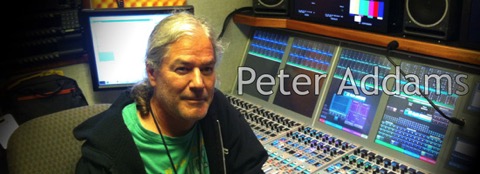
BB: So Peter, please tell us what is your function, and what does it include
Peter: “I am a Broadcast Show Mixer, Senior Audio. Lead of the audio department and I mix the television show. Also I plan the set up and co-ordinate all equipment with the Technical Manager”.
BB: How many years are you on UFC
Peter: “My first UFC event was in February 2003 so that makes a total of 10 years already”.
BB: What is the best part of the UFC events
Peter: “That's easy - our Audio crew. We have a core group of A2's that are very talented, hard working and don't whine (too much). They complement one another and work well together. Though each is a specialist they will go into each other's areas as needed”.
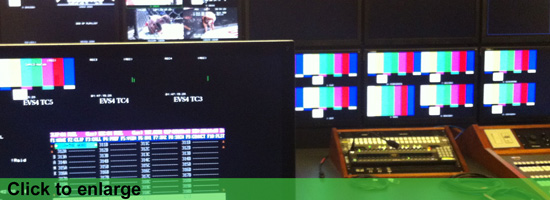
BB: What is the difference of Brazil and other countries at UFC events
Peter: “From my perspective? In the USA we are familiar with the mobile units we use. Though the mobile unit in Brazil was a joint venture between American based NEP and Brazilian based Casablanca, it was different than most of the mobile units we would use in the USA. This manifested itself in capacity and accessibility. We had fewer powered intercom channels than we usually do, couldn't access as many ports in the intercom system, the desk was only 48 faders instead of the usual 64 or even up to 144 on the surface as in USA. This is typical when we go overseas. In Europe we often use UK mobile units, other countries might involve a "fly pack." The challenge is to provide all the technical elements of our show regardless of the facilities we are using”.
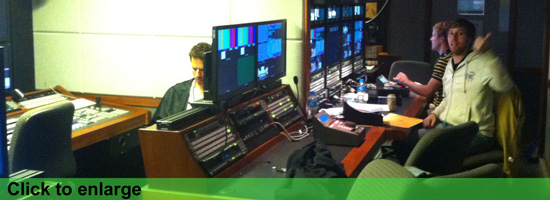
BB: How is communication in Brazil Challenging
Peter: “As I don't speak Portuguese. In the work environment I was really only dealing with English speakers so it wasn't a problem”.
BB: What are the good and bad parts of Brazil
Peter: “As event host nothing that effected me aside from the catering”.
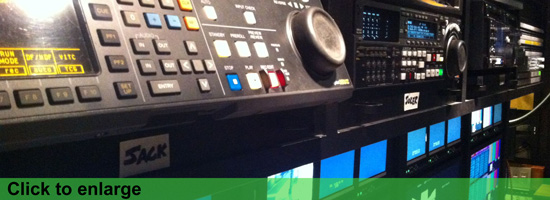
BB: Does the latin culture influence the way of working
Peter: “In my line of work this does not influence me”.
BB: Any specific technical difficulties this last UFC, and if so, these were due to what exactly
Peter: “It was the first time we used the mobile unit, that's always a challenge. Fortunately NEP sent Nick Romano and others who had done our show before on other mobile units”.
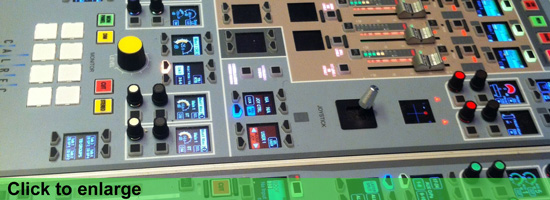
BB: Any good advice for the Brazilians in this area
Peter: “Obviously if you're working with USA television personnel, who tend not to master any other language aside from their own, English fluency is an asset. Also, understanding the urgency and immediacy that characterizes American television is important”.
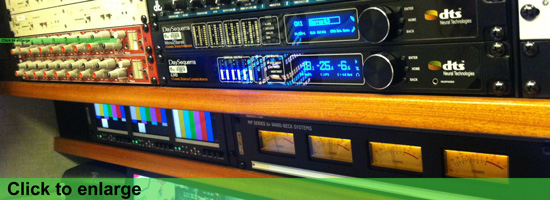
BB: And of course, do you have other interesting notes to share from last UFC event
Peter: “Due to big distances in Brazil, having the hour long bus ride to and from work makes a long day even longer.
The Hotel bar could've been open later and been more interesting. And why no Gin & Tonic? :)”
So we hope this is, besides, fun to read, also a good help and insight information about foreign broadcast events held in Brazil and what the future may hold".
More photo's available on our Broadcast Brazil Facebook page, you can find them here.
Like us if you want ;)
And see our former blogposts about the UFC event held in Rio de Janeiro and Belo Horizonte.
mentioned:
UFC
NEP
Casablanca
Genelec - Interview with Miguel Dominguez
Genelec
Interview with Miguel Dominguez
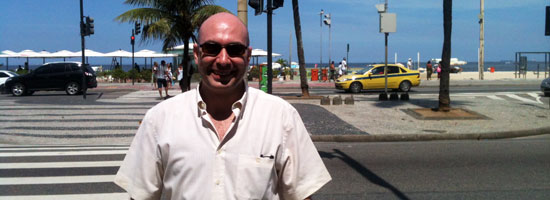
We had the pleasure to meet Miguel during his latest business trip in Brazil. Having a good lunch in Copacabana with a lovely beach view, it was the perfect place to get to know him and Genelec a bit better. Since Genelec is entering the Brazilian market we though it interesting to have Miguel tell us more about his points of view of the Broadcast Market.
BB: Miguel, what is your occupation
Miguel: ”I work for Genelec as Area sales manager”
BB: How long do you work for Genelec
Miguel: “Since August 2012”
BB: How long do you work in the south america region
Miguel: “About 10 years”
BB: How long does Genelec exist, and how long in Brazil
Miguel: “Genelec was founded in 1978. This year is the 35th Anniversary. Pride Music, the current distributor, has been working with Genelec the last 7 or 8 years, but you can find Genelec monitors in Brazil since the 80s and 90s.”
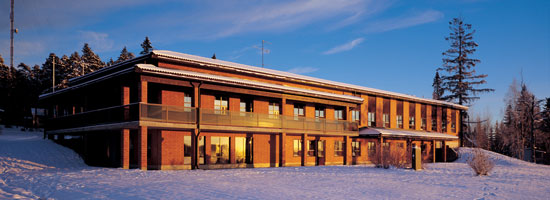
BB: Which product is most popular in Brazil
Miguel: “The top seller in 2012 was the 8030A, as it is all around the world.”
BB: Did you see a growth in audio/video related material in brazil
Miguel: “This is what the AV industry is probably expecting; Brazil is heading the technical improvements in the Broadcast market in the Latin America region. However, I think the main growth will happen within the next two years probably.”
BB: Which section in the audio/video market is strongest for Genelec in brazil
Miguel: “The top clients in number of units purchased are broadcasters, as usually happen everywhere for Genelec. I would expect to find an increased market and also more diversified in the short-medium term.”
BB: Official representatives are situated where, and how many
Miguel: “Genelec tries to work with only one exclusive distributor, although this depends very much on each country and the potential markets. We have right now in Brazil only one distributor, Pride Music, based in Sao Paulo, but they work with dealers in all the main cities of Brazil.”
BB: How is business and sales different from Europe/USA in brazil
Miguel: “The main difference is probably the difficulties in customs to import any product in Brazil. This changes the rules quite significantly.”
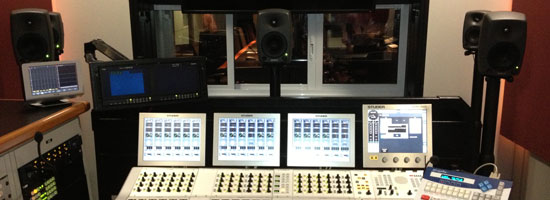
BB: Is the english language still a problem in communication
Miguel: “I don't really know since I communicate in Portuguese with my brazilian clients, or at least in ¨Portuñol¨, since I am Spanish native. I would think that in the professional level most of the engineers are able to speak in English and they don't have that lack of communication. Genelec hired me thinking in to open new direct channels of communications with the Portuguese and Spanish speaking markets in Latin America.”
BB: Are you partnering with other foreign companies here in brazil
Miguel: “Not right now although we have very good relationships with many manufacturers. We are discussing some possibilities with Dolby, and we are always in touch with manufacturers of mixers, microphones and other colleagues in the pro audio industry.”

BB: How do you see the broadcast market in 2014 due to world cup
Miguel: “The purchases of equipments that the Broadcasters can need for the world cup should be done within the next 12 months, probably less. However, the brazilian broadcasters are quite well equipped technologically. Another different issue is if they will have enough resources to cover properly all the events, but, if they don't have them and they don't want to buy them, the market will be interesting for foreign rental companies. Anyway it is a great opportunity for improving the technical development, already high, of the brazilian broadcast market.”

Miguel: “Due to the complicated system of taxes the manufacturers of less expensive monitors are usually hardest competitors. However Genelec is in a range of quality, reliability and performance where our typical competitors in Europe or USA are not real opponents in Brazil.”
BB: Any surprising challenges in brazil
Miguel: “Surprises depends on the open mind you have. In this industry usually any challenge can be faced up working hard and thinking smart. Perhaps the main challenge can be to change the trend of the brazilians of buying abroad, although it is not a surprise.”
BB: Are there new upcoming products you can tell us about
Miguel: “There are, but it is still too soon to talk about it. We will have many exciting new products along this year. Genelec has always tried to lead the industry of active monitors and I really think we are right now offering the state of the art technologies and it will be even better in the close future.”
So we hope this is, besides an interesting piece to read, also a good help inside a companies view and interests in the Brazilian market and future possibilities.
Be sure to check the Broadcast Brazil Facebook page and LIKE us.
Lot's of news, photo's and info for broadcasters, webcasters and mobile producers in Brazil.
mentioned:
Genelec
Dolby
Pride Music
English and "Consequences"
English and "Consequences"
Since we are an English focused website about the Broadcast, Webcast and Mobile world here in Brazil we really felt the need and of course pleasure to show you the following commercial from English school CCAA. They are known for using famous American actors for their marketing, but this is the first time we came across a great commercial from them.
Ok, besides that it is a great and funny commercial, the boy saying proudly Hotsydoggy (it's hotdog) it shows exactly the main issue in Brazil, and also one of the reasons we created Broadcast Brazil. There is such a big shortage in 'real' English speaking personnel in the Broadcast world in Brazil that these "consequences" as in the video do happen, of course not being attacked by sharks ;-), but in a practical real way.
For example:
A Video Director needing to give directions to a cameraman while the camera operator speaks only "more or less" English (claiming he speaks it) Consequence? Wrong shots, misplaced timing.... And so on. Of course we know that technical talk is different in each country, even using the English language, and that is why it is even more important to learn and really dominate your English. Besides that all us English speaking people in this Broadcast world are needed the coming years more and more!
The Shark Attack!
You can see the Shark attack as a metaphor for the foreigners attacking your jobs and if things don't change many people from other countries will be doing the work at coming World Soccer and the Olympics, it sounds a bit harsh, but it is a becoming reality. This commercial shows us the importance of being able to communicate worldwide and don't have to worry for "The Consequences" Here also the making of video, which is worth your time!
We'd love to hear your opinion about this commercial.
Broadcast Brazil
mentioned:
CCAA
The Journey Of A Boskalis Dredge by Visuals Studio Brazil

RIO DE JANEIRO – Like in any career a workday of a journalist-director has its ‘everyday’ projects. But with some projects you only realize afterwards how special they really were. This reflection also occurs at this time of writing, when Broadcast Brazil asked me to put something down on paper about this recent documentary-project.
Often you only receive a few words; "... special transport ... a dredger through the jungle of Suriname on ... 350 tires ... say a sharp
challenge for both man and machine ... ". But as a director you instantly feel that with this meagre list of ingredients you have something special in the hands.

After the first contact with the Communication Department from the headquarters of Royal Boskalis Westminster, I was redirected to the regional manager in Paramaribo for further planning and details. He told me because of persistent and heavy rainfall in the last weeks, the transport has been postponed several times. Suriname deals with an unusual lot of water, where in a few weeks time more inches dropped then usually throughout the entire rain season.
But as experience shows ... delay is inherent in the maritime industry. Despite tight time schedules and a detailed scenario, the factor "weather" always comes unpredictable. And so the initial date for the transportation was shifted to three weeks later, hoping for some drier days. All in standby mode, meaning the calendar blocked, including my Belgian assisting cameraman who will fly straight too Paramaribo.
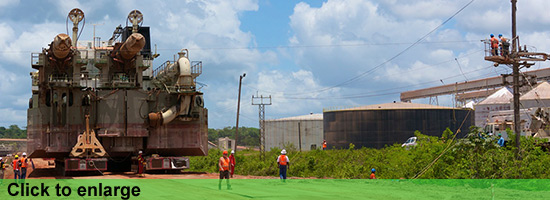
But unexpectedly the standby was two days shortened by an email with green light. The last two dry days indicates the start of an unique mobilization plan for the transport of one of the largest dredgers from the Boskalis fleet, the Orion. A huge cutter dredger of 1813 ton, 74 meters long and 15 meters wide, with its destination a bauxite mine south of Paramaribo. Here the Orion will excavate the valuable raw material for aluminium, for the next two years.
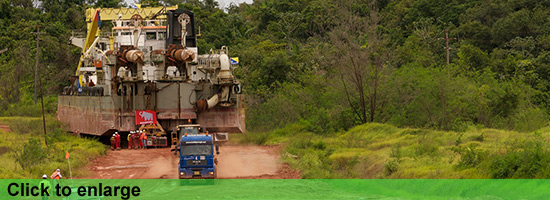
A month earlier, the Orion was put on a special transport ship, the Roll Dock Sea, in Abu Dhabi. Once arrived the cutter ship is put ashore at Paramaribo by means of a special constructed jetty to be able to put the ship on a 'train' of trailers, consisting of 305 air tires from the Dutch transport and heavy lifting company Mammoet.

A carefully elaborated mobilization scenario shows the various 'obstacles' on the route during 14 kilometers during 13 days, from jetty to the final destination, a dry mine pit in a jungle lake.
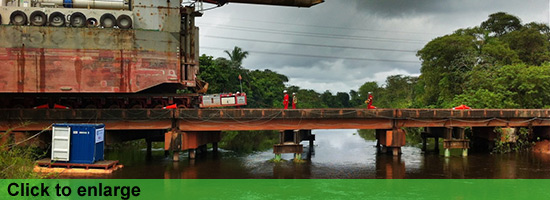
The Orion faces numerous challenges such as (too) low hanging power lines for its 15 meter height. Three sets of power masts had to be lifted, causing a temporarily electricity cut in the biggest part of Paramaribo city for a few hours.
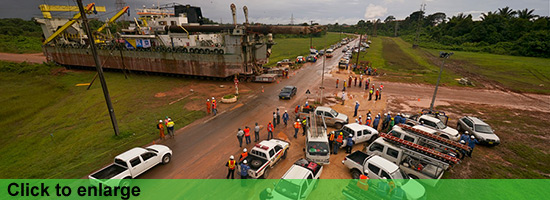
Another challenge is a narrow bridge that needs to be crossed. For this successful passage a special team reinforced and broadened the small bridge. For a (too) low viaduct a special bypass road was constructed, but the ultimate challenge the Orion had to deal with is the muddy and slippery road down to the special constructed launch pit. The trailers will be tested to the full to hold the heavy cutter downwards. The worse happens when one of the wheels of the trailer breaks. A big commotion appeared, but both professionalism and experiences make the teams decide to continue with calculated risk. Finally, after three hours, the Orion fleet is lowered at its final destination and ready for their mission in the next 80 weeks.

Not only an admirable mission by the men of Boskalis, but certainly a feat expertise of Dutch origin. For me and my camera assistant a huge challenge as well to capture this spectacle in a visual attractive way. The preview along the route showed already a considerable number of potential angles, but at the moment itself, it always takes improvisation in the constantly-changing conditions such as rain, bright sun and safety measures for that moment.
The various obstacles along the route were shot with 5 HD-cameras; a Panasonic AVCCAM and two Panasonic GH-1 DSLR cameras with variable lenses. The smaller HDs were mounted along the locations. For the title shot of the documentary we buried one of the cameras in the middle of the muddy road, where the huge Orion passed over perfectly. The snail's pace of the Orion on the trailers through the landscape turned out perfect for time-laps sequences, which, once in the editing studio back in Rio de Janeiro, could be speed up in special effects.
Overall a successful documentary and well- received by the Boskalis team about an exciting mission through the jungle under severe conditions in terms of weather and temperature.
Director – producer: Ernst Daniel NIjboer
2nd Camera – editor: Paolo de Graaff
video:
The Journey of a Dredge from Visuals Studio Brazil on Vimeo.
mentioned:
Visuals Studio Brazil
Boskalis
Mammoet Brazil
Panasonic
Special report: The 2012 numbers
 Formula 1 2012 São Paulo - Brazil Grand Prix for EBU, Special report
Formula 1 2012 São Paulo - Brazil Grand Prix for EBU, Special report
The Dutch satellite uplink company Multi-Link Holland is responsible for all Formula 1 EBU (European Broadcasting Union) transmissions.. This company travels the world since 2004 for the Formula 1. You can regonice them easily by their green uplink dishes. Since 2004 they produce satellite uplinks at the Formula 1 for many broadcasters, RTL Netherlands, RTL+ Germany, ORF Austria, Sky Italia, Ferrari TV, ViaSat Sweden and more. They will give us an inside look through the whole season in what they must achieve on every location they land with their equipment, starting this weekend in Melbourne Australia and ending 25 november in Brazil. At this last race in Brazil we will do a special report about this company on the Interlagos circuit
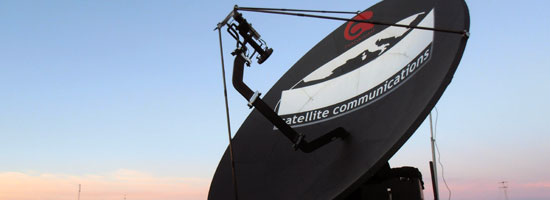
One year almost, one season Formula 1 and traveling the whole globe for the Multi-Link Holland Uplink team. That means we have some statistics for you in this last Formula 1 article of this year.
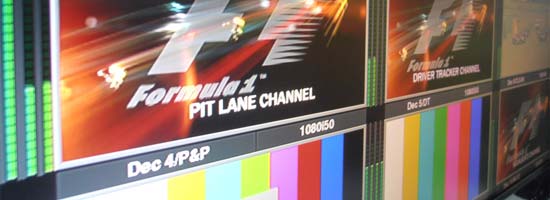
Gerben Vissers "Past season was a very long season. Every race we were on the spot with a least four people of Multi-Link Holland. it means we did travel, work, drink, eat, sit, run solve , talk, joke and laugh a lot. The thing we did most i will put it into some statistics".
Team Statistics:
• 34 Plane flights for each team member
• 40 Train travels for each team member
• Thousands of kilometers truck drives thru Europe
• 75 Rental cars (in which all are brought back in a... working condition)
• 134 Different Hotels
• 140 Hotels Breakfasts
• 8378,4 Jokes and laughs
• 1440 hours of work (at least) on location for each team member
• 181 Visits to different restaurants, snackbar's, grill houses
• 750 Hours of transmitting for each dish and HPA
• 321,5 Hamburgers (but we think it is more than that even)
.................... and about 20.160 Can's of cold Coca Cola Light (Diet Coke)
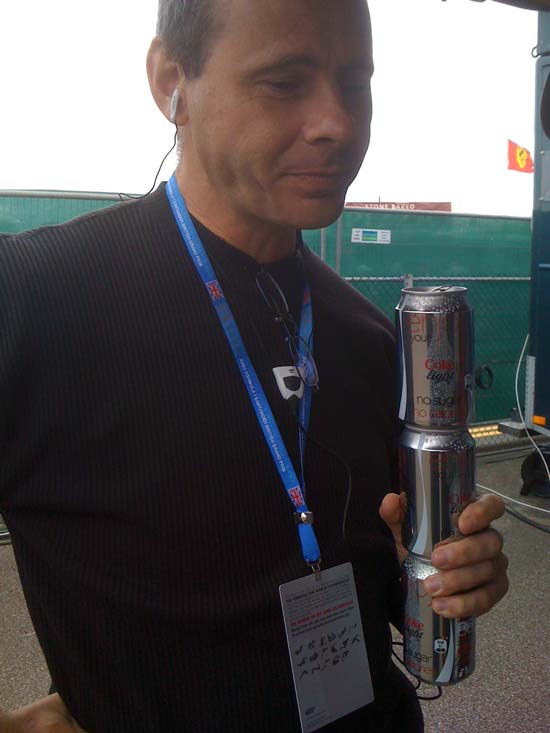
"It was a very nice season. Everything has gone very well this year. Also it was very challenging because in addition to the connections for the EBU we also produced the video / audio production for TV Globo Brazil and the editset + uplink for the German Broadcaster ZDF We are most of the time far from home and work long hours. But it's a nice group of people we work with and we visit very special locations. Besides we have to entertain ourselfs on the job to keep the team spirit" Gerben explained.
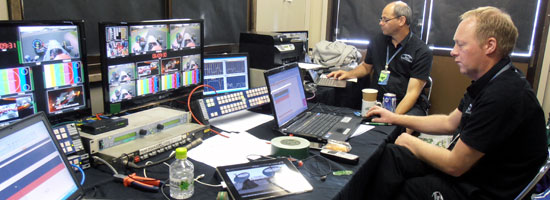
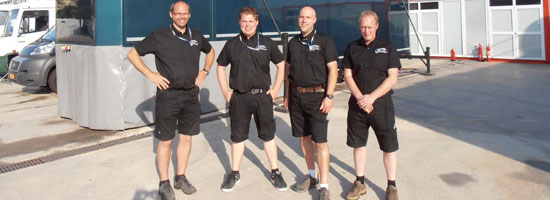
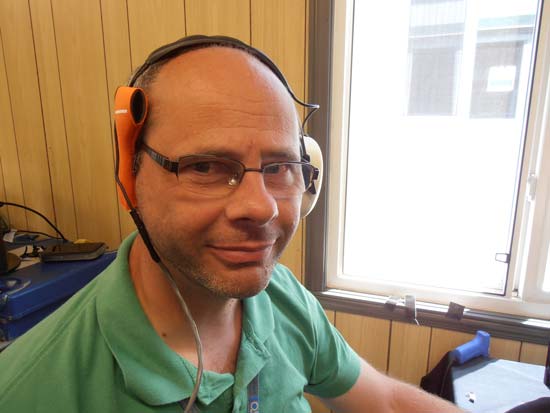
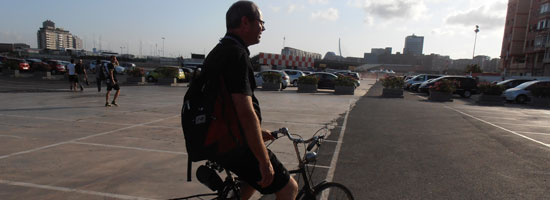
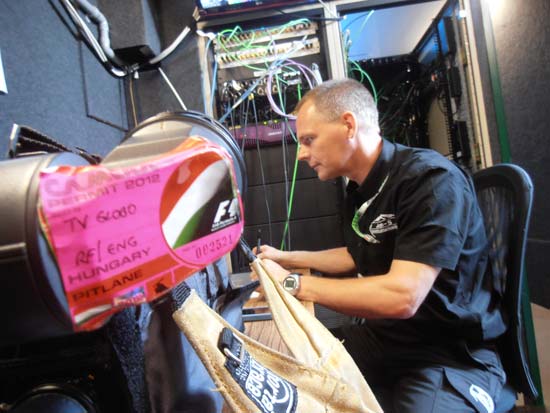
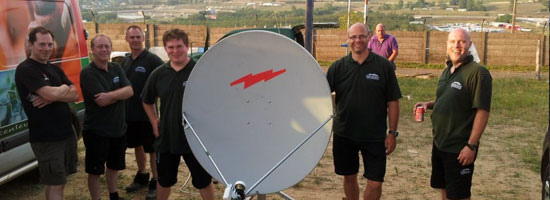
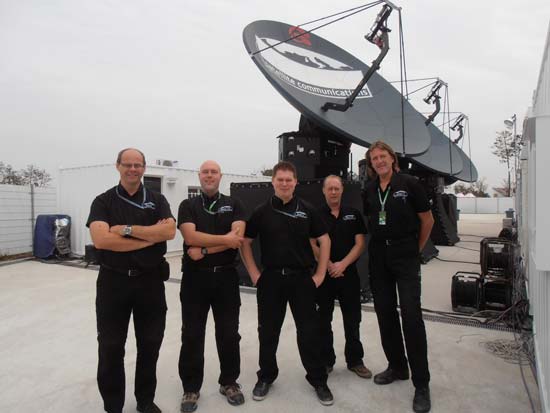
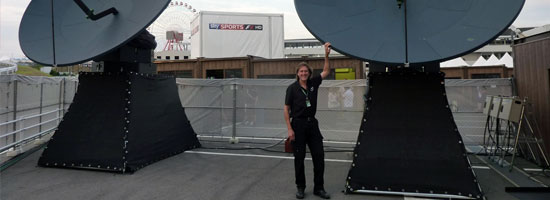
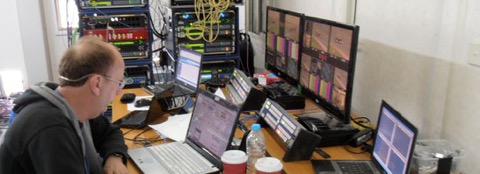
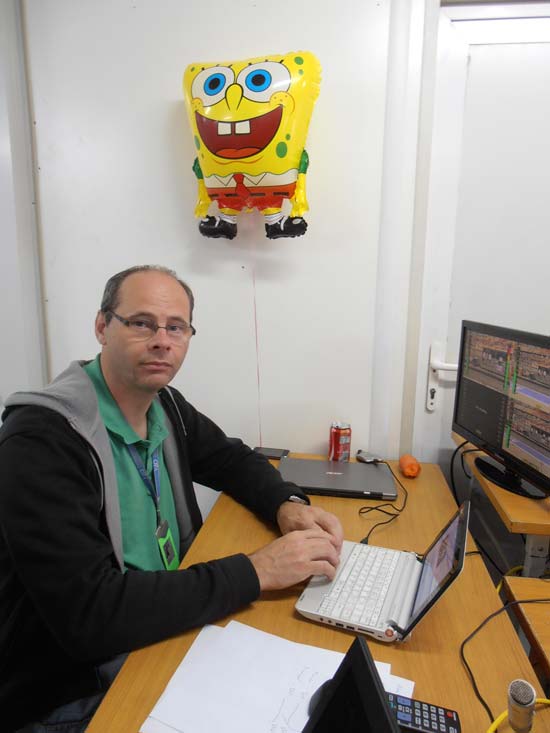
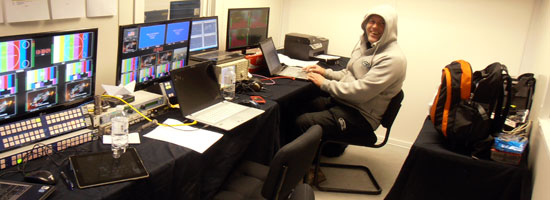
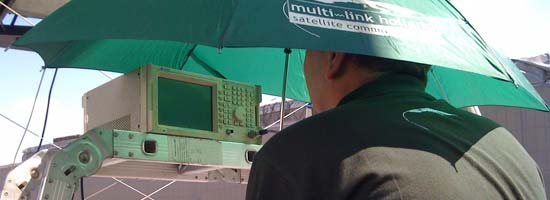
Gerben"I would like to say thanks to anyone I have worked together over the past year. Such as my colleagues of Multi-Link Holland, the staff of SKY, the employees of the EBU, the employees of the FOM, the staff of TV Globo Brazil , the guys from D.O.T. and many, many others. I also want the readers and creators of this blog thank you for the interest. I hope to see everyone back next season".
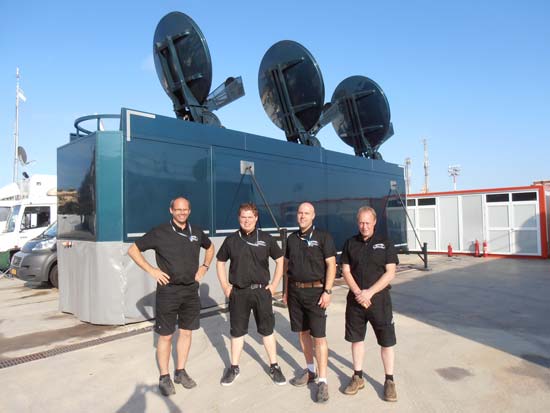
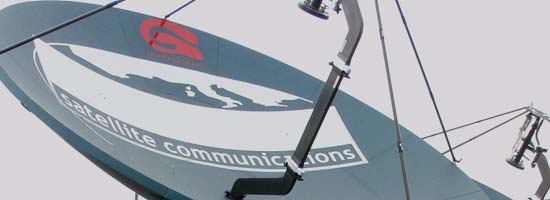
This was the last Formula 1 blog entry for this year, we hope we will do this next year again with the guys from this Dutch company. We can learn from them a lot, to se what they do to acchieve the result at the end of the season. We can also see that the english language is the basic used language on this event, so of you want to work there, start to study your english. Thanks Gerben Vissers, Bob Snieder, Marco Mohr , René van Hooff and Marco van Uffelen for their support on this blog last years. Hope to see you all next season for some nice tech stories again. Happy Holidays guys !!!
Listen every friday night Live to Grand Prix radio stream by Olav Mol .
Every Grand Prix a new Mix on, this time a Brazil Special at 19:00 tonight !!!!!!!
More photo's available on our Broadcast Brazil Facebook page, you can find them here.
mentioned:
Multi-Link Holland
EBU
Sky Sports
Globo TV Brazil
D.O.T.
Gigasat
Coco Cola Light
Olav Mol
Grand Prix Radio
Special report: WIF & NIF, day 4
 Formula 1 2012 São Paulo - Brazil Grand Prix for EBU, Special report
Formula 1 2012 São Paulo - Brazil Grand Prix for EBU, Special report
The Dutch satellite uplink company Multi-Link Holland is responsible for all Formula 1 EBU (European Broadcasting Union) transmissions.. This company travels the world since 2004 for the Formula 1. You can regonice them easily by their green uplink dishes. Since 2004 they produce satellite uplinks at the Formula 1 for many broadcasters, RTL Netherlands, RTL+ Germany, ORF Austria, Sky Italia, Ferrari TV, ViaSat Sweden and more. They will give us an inside look through the whole season in what they must achieve on every location they land with their equipment, starting this weekend in Melbourne Australia and ending 25 november in Brazil. At this last race in Brazil we will do a special report about this company on the Interlagos circuit
Friday is always a long day for us. It starts at 8:00 in the morning with the first transmission. We arranged satellite capacity from 7:45 so we ensure that we are present at 6:45. This means we must leave very early from our hotel to prevent we are late. At 10:00 the first free practice.

We allow you to send to the WIF (Wide international feed), NIF (Narrow international feed) and Sky UK. Everything in HD1080i50. The difference between the WIF and NIF is that the graphics in the NIF fall within a 4:3 frame so that even the edges off him in 4:3 can be broadcast. This because in some countries they still transmit in 4 by 3... and also need to see the Graphics, timing info, standings etc etc
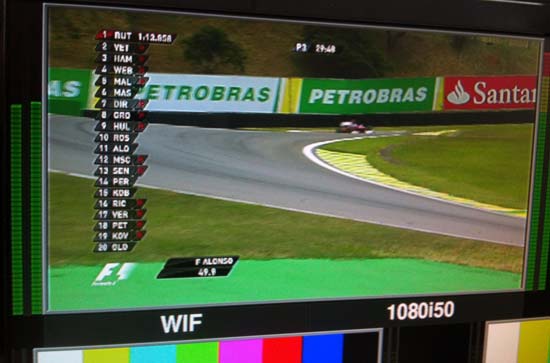
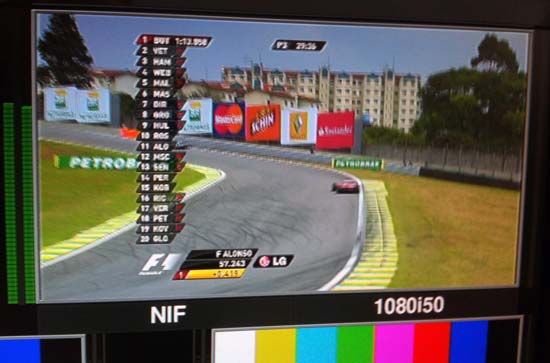
In addition to these channels, we ensure also that 2 muxed signals go by fiber to Europe. These both are put on satellite in Germany by another uplink.
In the afternoon we transmit the second free practice. We also do the tape feeds for different broadcasters at the Play Out Desk. In this configuration we WIF a 2 channel muxed mpeg 4 so we simultaneously help more customers ate the same time. We got a lot of happy clients this way.
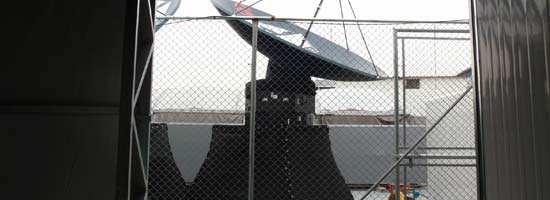
At 20:00 we are finished and it is than time to cool down our HPA's and search a good restaurant in which is easy in São paulo. On Saturday morning the alarm wakes us up again at 6:15.... saturday is 1 free practice and qualifying... loooong day again.
Listen Tonight Live to Grand Prix radio stream by Olav Mol with a Brazil Special at 19:00 Brazil time.
Every Grand Prix a new Mix on, this time a Brazil Special at 19:00 tonight !!!!!!!
More photo's available on our Broadcast Brazil Facebook page, you can find them here.
mentioned:
Multi-Link Holland
Sky Sports
WIF
NIF
Olav Mol
Grand Prix Radio
Special report: Tweeking setup, day 3
 Formula 1 2012 São Paulo - Brazil Grand Prix for EBU, Special report
Formula 1 2012 São Paulo - Brazil Grand Prix for EBU, Special report
The Dutch satellite uplink company Multi-Link Holland is responsible for all Formula 1 EBU (European Broadcasting Union) transmissions. This company travels the world since 2004 for the Formula 1. You can regonice them easily by their green uplink dishes. Since 2004 they produce satellite uplinks at the Formula 1 for many broadcasters, RTL Netherlands, RTL+ Germany, ORF Austria, Sky Italia, Ferrari TV, ViaSat Sweden and more. They will give us an inside look through the whole season in what they must achieve on every location they land with their equipment, starting this weekend in Melbourne Australia and ending 25 november in Brazil. At this last race in Brazil we will do a special report about this company on the Interlagos circuit.
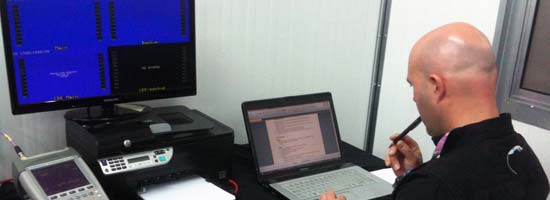
Thursday is always the day of the fine-tuning and tweaking, testing systems and the doing first Uplinks for EBU.
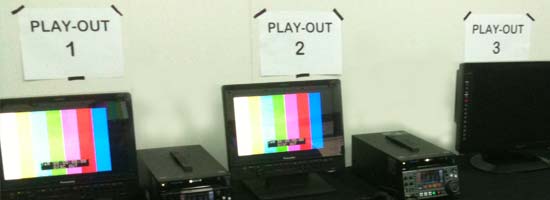
In Brazil we do besides the uplinks for EBU also the so called Play Outs. In the same cabin where we do the uplinks are also the play-out machines connected. The broadcasters that only have a camera ENG crew on location, enter our cabin with their footage to send it to their homeland. Normally this will be covered by the host broadcaster and we only transmit the signals but in Brazil we also coordinate all these Play Outs. We use 2x a HD XDCam deck and 1x P2 HD player. Customers with other formats run their own player or camera and give us the HD-SDI output. We put this signal this through fibers to our HD-SDI router and switch it to the correct encoders in our rack.
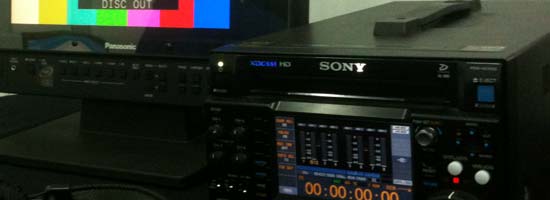
On Thursday we also test the uplinks. Almost every race in every country we have being we do this on Thursday 14:00 local time, a full test. Here do almost all broadcasters participate. It is a live as race test (like it would be on sunday) in which all systems tested. The tests went smoothly today.
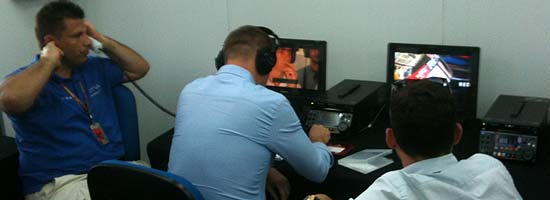
Other broadcasters had some problems in the morning problems because something went wrong with the local voltage. We were happy here not bother because we work with an automatic switch where both local voltage and a generator. Behind this is a 80kVA UPS. This system, we only use in Brazil and in recent years also proved very necessary, every year there are problems in this. Last year the man in control of the power decided to stop the generators just after the race. The man thought the race is over so I can shut down and go home. He really did not realize that the pre and so called 'aftershows' often are the major programs related to advertising revenue.
Friday first Free Practice Transmissions, we are ready for it.
Every Grand Prix a new Mix on, this time a Brazil Special:
More photo's available on our Broadcast Brazil Facebook page, you can find them here.
mentioned:
Multi-Link Holland
Sony professional XDCAM
EBU
Sky Sports
Special report: Finalizing EBU setup, day 2
 Formula 1 2012 São Paulo - Brazil Grand Prix for EBU, Special report
Formula 1 2012 São Paulo - Brazil Grand Prix for EBU, Special report
The Dutch satellite uplink company Multi-Link Holland is responsible for all Formula 1 EBU (European Broadcasting Union) transmissions. This company travels the world since 2004 for the Formula 1. You can regonice them easily by their green uplink dishes. Since 2004 they produce satellite uplinks at the Formula 1 for many broadcasters, RTL Netherlands, RTL+ Germany, ORF Austria, Sky Italia, Ferrari TV, ViaSat Sweden and more. They will give us an inside look through the whole season in what they must achieve on every location they land with their equipment, starting this weekend in Melbourne Australia and ending 25 november in Brazil. At this last race in Brazil we will do a special report about this company on the Interlagos circuit.
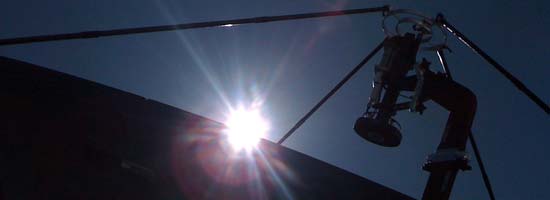
Again a very very nice sunny day in São Paulo. This makes working more easy and more pleasant. It is still needed to prepare the 3 Gigasat dishes for Rain. Knowing from past years the weather can change suddenly over here. Protection against water of the Amplifiers is very important, they do not like it too much.
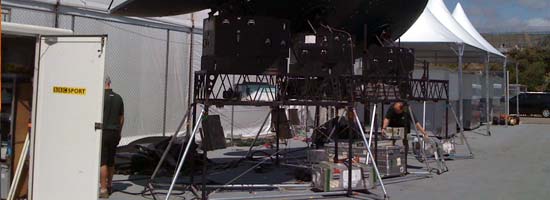
Meanwhile still waiting for the promised tables so the Play Out's can be installed. They will be there at 11:00 ... they said. Then concentrate first on the other cabling towards FOM and TV Globo Brazil. FOM needs cables for audio, communications and WIF + NIF signals what need to be transmitted. These last 2 go by a fibre. Globo just needs WIF + NIF, these go by copper.
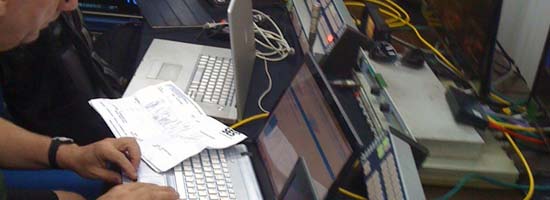
Also the work on the dishes themselves continues. They are pointed precisely to the satellites, and there will be some testing with all 3. Following the instructions and info delivered by EBU and the satellite operator are crucial. Communications between them is only in the english language, does not matter where the satellites are from Japan, Brazil or Germany.

At 15:00 the so hard needed tables arrived, or better said....... EBU bought those themselfves at a shop in São Paulo. No time to waste! The Play Out's , XDCAM HD were installed rapidly and professionaly by a Brazilian rental company. All signals from the Play Out's go by fibre to the Rack where they will be encoded and transmitted.
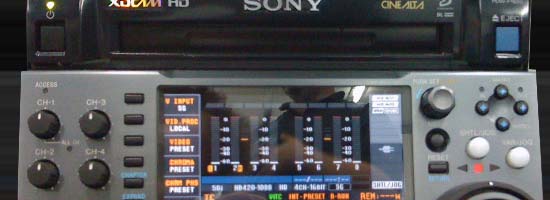
All setup now, just some minor things to arrange on thursday. The last parts of the work on the dishes is done, the finalization with the black fabric around the frame underneath the dishes are performed, just to let make everything looking great and protect some more against rain water. This fabric solution is invented by Multi-Link Holland themselves.
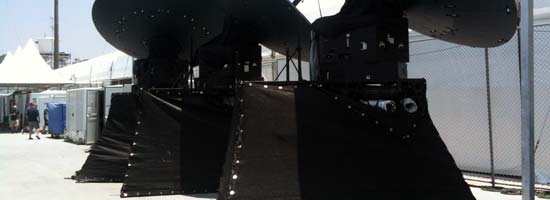
At 22:00 all was done for today. Time for some food (did not have lunch even yet).
Every Grand Prix a new Mix on, this time a Brazil Special:
More photo's available on our Broadcast Brazil Facebook page, you can find them here.
mentioned:
Multi-Link Holland
EBU
Sky Sports
Globo TV Brazil
Gigasat
D.O.T.
FOM (Formula 1 management)
Special report: Setting Up Dishes, day 1
 Formula 1 2012 São Paulo - Brazil Grand Prix for EBU, Special report
Formula 1 2012 São Paulo - Brazil Grand Prix for EBU, Special report
The Dutch satellite uplink company Multi-Link Holland is responsible for all Formula 1 EBU (European Broadcasting Union) transmissions.. This company travels the world since 2004 for the Formula 1. You can regonice them easily by their green uplink dishes. Since 2004 they produce satellite uplinks at the Formula 1 for many broadcasters, RTL Netherlands, RTL+ Germany, ORF Austria, Sky Italia, Ferrari TV, ViaSat Sweden and more. They will give us an inside look through the whole season in what they must achieve on every location they land with their equipment, starting this weekend in Melbourne Australia and ending 25 november in Brazil. At this last race in Brazil we will do a special report about this company on the Interlagos circuit.
We arrived last tuesday at lunchtime in the impressive circuit at Interlagos, São Paulo. Here we meetup with the crew of Multi-Link Holland to follow them next coming days in transmitting this Grand Prix Live for the whole world from Brazil.
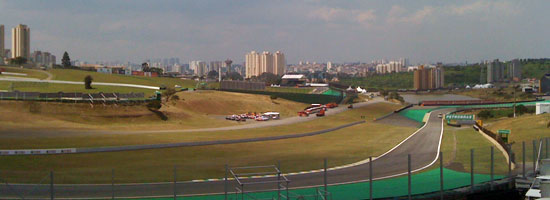
On the São Paulo TV-Compound Multi-Link Holland is situated in a nice box. The rack's with equipment already arrived, ready for building up and connecting the needed cables. In the same box also the 'play-outs' will be made for the diverse ENG teams. Problem number 1, there are not tables enough to give everything a place. Instead we start with building the racks, monitors and routing. Those tables will hopefully arrive tomorrow.
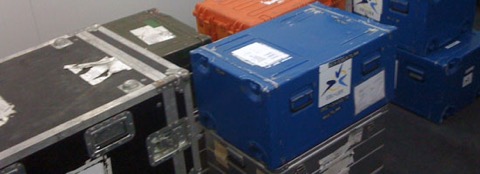
Another problem.... the satellite dishes are still not declared by the Brazilian customs yet. Because it is equipment to transmit they have to check them twice. The D.O.T. expect them to arrive at night from the Airport of Campinas. So..... let's than do also some cabling already to some other boxes and the place where the dishes will be placed. Problem 3, the guy with the drill seams to be very busy... we have to wait for that. Meanwhile we are finalizing the racks and cabling for it. Besides that.... the coffee machine is installed.
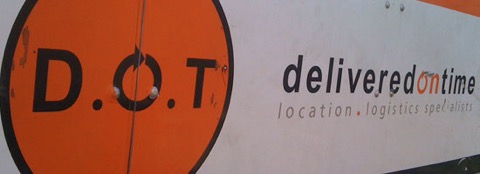
At about 19:00 we receive the message that the drill is broken, it seams there is only one on the circuit... so that will be tomorrow before they come back with a new one. We almost left the TV-Compound when the D.O.T. informed us that the dishes arrived. We stayed to build them up. Setting up these dishes is a very precise job. Step by step they are place and pointed in the right direction. It is obvious these guys are very experienced in this, take a look at the following photo's
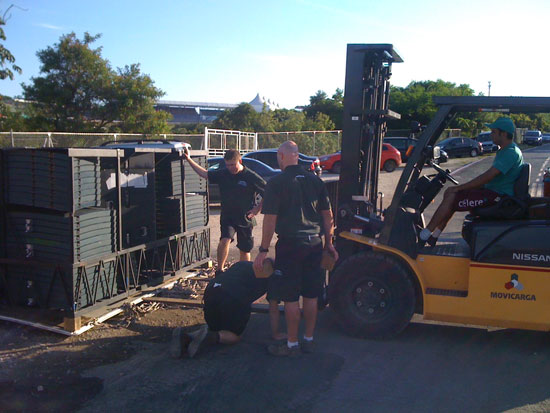
Unpacking the 3 x Gigasat FA370 dishes that will be used for the EBU transmissions in Brazil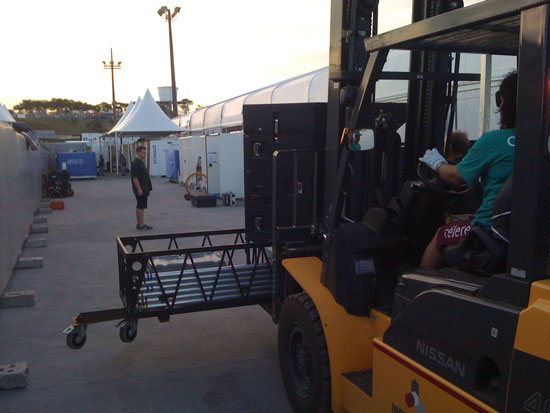
Getting the 3 x Gigasat FA370 dishes on their spot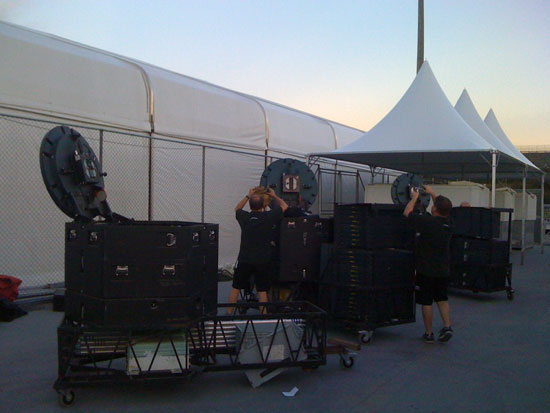
Step 1: Prepare cabling and put needed equipment on it's place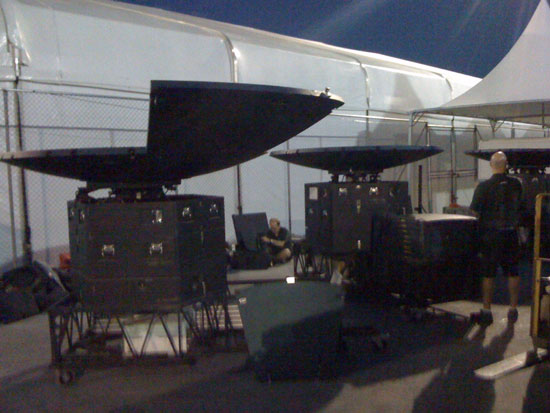
Step 2: Parts of teh dishes are installed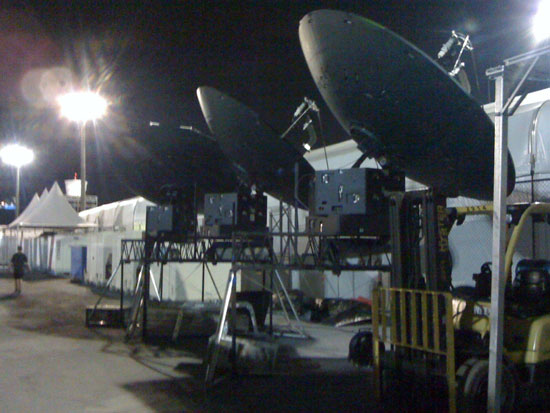
Step 3: Heads on, and dishes installed on their frame and height.
At 23:00 all was setup, it is called a day by the crew. Wednesday will be cabling and pointing the dishes to the satellites.
Every Grand Prix a new Mix on:
More photo's available on our Broadcast Brazil Facebook page, you can find them here.
mentioned:
Multi-Link Holland
EBU
Sky Sports
Globo TV Brazil
Gigasat
D.O.T.
The Motion Graphics production in Brazil. The past and the future.
The Motion Graphics production in Brazil. The past and the future.
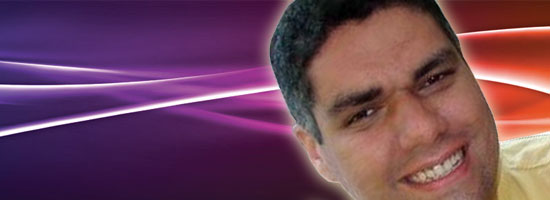
Daniel Guimaraes is graphics designer for TV stations in the Brazilian market since 2004
The graphics have always been huge part of audiovisual production in Brazil. Since the beginning of TV Tupi in 1950, where the cartoon of a friendly little Indian boy called programmes until today with computer graphics leaving viewers more awestruck than ever.
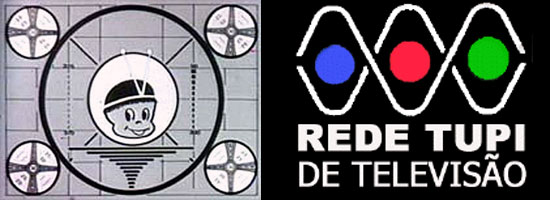
TV Tupi
The Brazilians have a special fascination with regard to the "graphic identities" of video productions. Much is due to the Austrian designer Hans Donner, known nationally and internationally as the "Wizard of Graphics". Donner, art director of the giant TV Globo has revolutionized the world of graphics on TV in the late '70s and early '80s, with its unique style and 3D animation. A revolution for the time.
If asked, Brazilians remember every single intro sequence of their famous telenovelas (soap operas). Among the audience, the motion graphics are still a very big success.
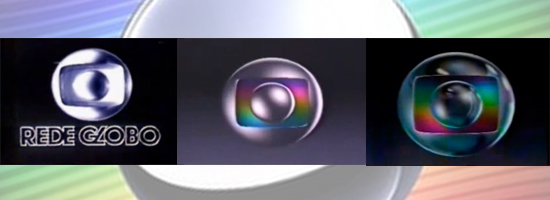
TV Globo Brazil
Nowadays with the advent of digital media, internet, cable channels (cable TV only began in Brazil in the late '80s), this market is experiencing a very large expansion. At the same time, trends change. The geometric shapes of metal flying in space - Donner's mark in his job for TV Globo in 80s - were outdated. Today, Brazilian TV graphics are getting more and more similar to those produced internationally.
Over the past 10 years audiovisual production in Brazil is seeking to fit within the international standard. A movement that follows the evolution of the country - increasingly inserted in the international market
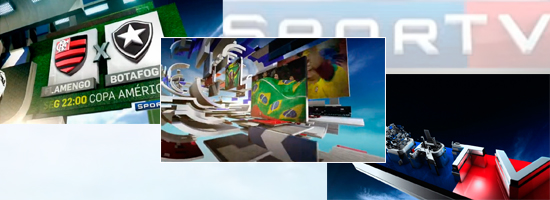
SporTV
Channels like SporTV (pay-TV) and TV Alterosa (affiliate of SBT network in Minas Gerais) sought in major international animation graphics companies solutions to their demands, in their very case the companies are US-based Troika and Renderon, respectivelly.
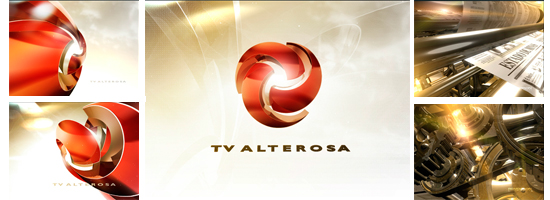
TV Alterosa
Rio de Janeiro-based animation producer Beeld is perhaps the example that Brazilians have understood this market movement. Beeld produces excellent pieces for various cable channels and also gives a more current and fresh style to Globo, indeed in their famous soap operas opening sequences.
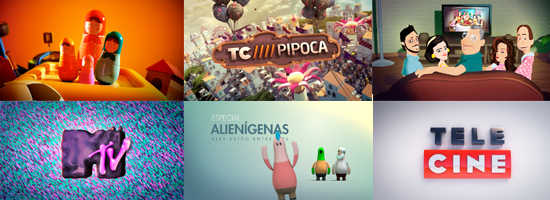
Beeld - Rio de Janeiro
Globo continues to spearhead this in Brazil, but the myriad of channels that are available today in the Brazilian television, along with the internet/webcast booming marketing opens up great opportunities.
The federal law 12.485 from 2011 is now requiring cable channels to have part of their programming produced in Brazil, This is already creating demands for this market even more, especially for freelancers willing to make its mark in the market of the South American giant. And with the World Cup 2014 and the Olympics 2016 on the horizon, this demand grows further, it is up to designers worldwide know how to discover Brazil animations and computer graphics market.
VFX playlist:
Video playlist with TV Tupi , Globo , Troika, Renderon & Beeld
Daniel Guimaraes is graphics designer for TV stations in the Brazilian market since 2004.
mentioned:
TV Tupi
Hans Donner
Telenovelas
SporTV
TV Alterosa
Troika
Renderon
Beeld
UFC 147 in Belo Horizonte.
The 21st till 24th of june Broadcast Brazil was in Belo Horizonte in the state of Minas Gerais, Brazil, at the 147th UFC event.
This big fighting event was held in the stadium Mineirinho.
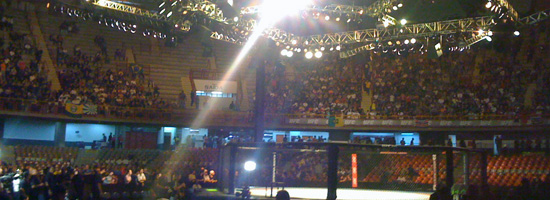
Mineirinho, Belo Horizonte - one hour before the live broadcast starts.
A well known figure at this event is Brian Froustet, a very experienced A2 (Senior audio assistant)
We had the chance to ask him a couple of questions about his work at the UFC events.
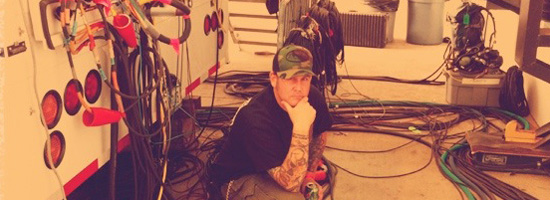
Brian Froustet, A2.
BB: So Brian, please tell us what is your function, and what does it include
Brian: "I’m an A2 or Audio assist. Basically I take care of everything not dealing with the actual mixing of audio of the show. My main position with UFC is the Booth A2 which entails setting up the Booth Announce position for Mike Goldberg and Joe Rogan for them to announce the fights and do there on camera stand ups. I also set up all the comms, courtesy listen headsets and put the efx around and under the Octagon. But as you know my job is not limited to that. As an audio team we all jump in to take care of whatever needs to be done audio wise for the show whether it be running or making cables, building other interview positions and just helping each other out however we can".
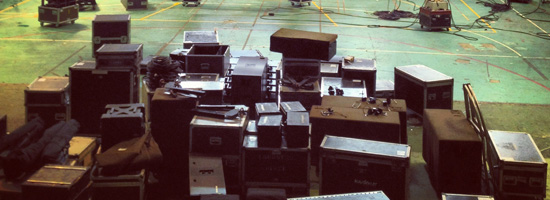
Mineirinho, Belo Horizonte - setting up.
BB: How many years are you working on the UFC
Brian: "I have been working with the UFC since 2008"
BB: What is for you the best part of the UFC events
Brian: "There are many great things about working all the UFC events... Besides traveling all over the states for shows I have been lucky enough to have also gone to Australia, Japan and Brazil for events. I have also been lucky to meet some pretty amazing people because of traveling all over. But I think the best part for me is being able to do all that with the audio guys I travel with, MJ Law, Ryan Mitchel and Robert Massey. I couldn't imagine doing this job without them, they are the best at what they do and are the best friends a guy could ask for. Oh, and I get to see some pretty amazing fights, hahaha".
BB: What is the difference Brazil and other countries at UFC events
Brian: "I think the biggest difference between doing UFC events in Brazil and in other countries is definitely the language barrier. It seems that most of the other places we go English is used quite a bit more than it is in Brazil. Obviously we all try and learn some basic Portuguese to communicate, but as I'm sure you know its not an easy language to learn.
As for the equipment and venues, there is really no difference with some of the places we work in the States. Some buildings are easy to get stuff in while others are just a big pain in the ass".
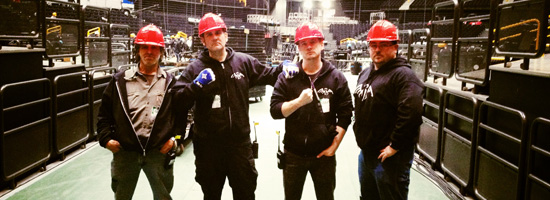
Your DreamTeam for any UFC event.
BB: What are the good and bad parts of Brazil as event host
Brian: "Brazil is an amazing place to hold UFC events. The energy of the crowd is like no other place I have been with them. Its awesome to hear and see people screaming and cheering for six hours straight. I really can't think of anything bad other than its tough for me to eat at times since I don't eat meat...The Brazilians really love their meat".
BB: Does the latin culture influence the way of working
Brian: "The culture itself doesn't really influence our way of working as I am sure you guys can tell. We obviously like to have fun but when its time to work we get the job done. We do whatever we can to respect the ways of the people or country we are in".
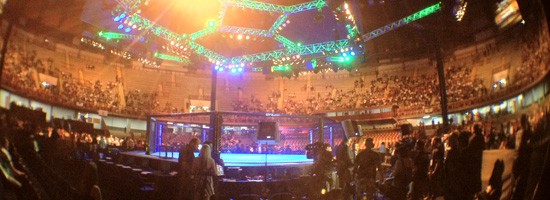
Mineirinho, Belo Horizonte - one hour before the live broadcast starts.
BB: Any specific technical difficulties this last UFC, and if so, these were due to what
Brian: "The only real technical difficulty we had for this past UFC in Belo Horizonte was one that, as small as it may be, caused quite a few issues and that was power for all the equipment. It wasn't the power itself but actually the plugs on the power cords. It was all 220v, but all of our equipment was Australian power and the power strips we had were Brazilian. Once that issue was solved we were good to go".
BB:Do you see a rise in the amount of (english speaking) Brazilian Broadcast Technicians needed during the UFC in Brazil. And in which specific areas.
Brian: "I do. I know there are plans to do more UFC events in Brazil and also with the World Cup And Olympics coming to Brazil, I think it would be a huge help. I'm not saying that the people coming to Brazil shouldn't learn some Portuguese, but even with that the translation does not always covey the way you would like. That being said I also don't want to take work from the locals but the reason they bring all of us is the ease of communication and we know the show and what needs to be done.
Now Obviously we have had the pleasure of having Niek van Esch, René Schaap and Danny Littlwin on the shows which is a huge help so Audio is not really an issue.
The biggest issue usually seems to be with the Camera operators. They don't send them all from the States and we do use locals. At times we have to set up a translator in the truck to tell them what the Director wants. Most of them speak some English but like I said before, what the Director say/wants and how they, the camera operators, understand, that is not always the same".
BB: Any good advice for the Brazilians in this area
Brian: "I would say to just ask questions. I know when I see new equipment or someone doing things differently than I would, I need to know about it. We all are always willing to show someone something new, it is how we all learned and how we are still learning.
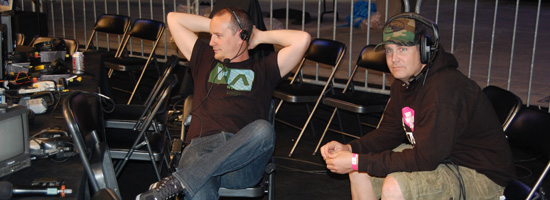
All under control.
So we hope this is, besides, fun to read, also a good help and insight information about foreign broadcast events held in Brazil and what the future may hold".
More photo's available on our Broadcast Brazil Facebook page, you can find them here. Like us if you want ;)
And see our former blogpost about the UFC event held in Rio de Janeiro.
mentioned:
UFC
Danny Littwin
UFC - Rio de Janeiro
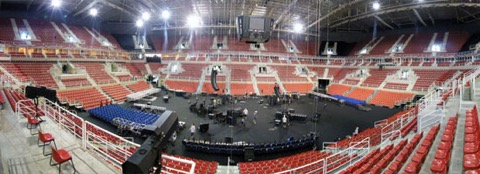
Brasil
After the huge success of the last UFC event in Rio de Janeiro on August 2011, the organization decided to have another UFC event in Rio, few months after the first edition. UFC is BIG in Brazil! Several local and foreign broadcast companies were on location to transmit live.The main TV Broadcasts were hosted by Alfacam Brasil, and two of their OB vans. Alfacam is a big international video-facility company, based in Belgium. They opened their Brazil office last year at the PoloRio Cine&Video in Rio de Janeiro, and are ready for the market in Brazil, and of course their goal, to host the FIFA World-cup 2014 & Olympic games 2016 in Brazil. Alfacam is a company with the capabilities and equipment for these international events, and provided the World-cup soccer & Olympic-games already before with OB-vans and classified people.
But also companies from Brazil are in Rio with their equipment and people, like Brasil Rig, Gabisom, Globo & GloboSat. Both Globosat & Globo brought their own OB-vans. Casablanca Online is delivering all satellite uplink facilities for live but also play-outs , and had 8 uplink trucks on site, to deliver the uplinks for the TV stations.
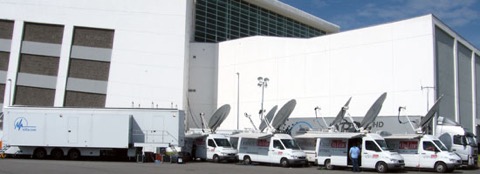
Foreign
One of the most important parts of this production is communications. Not only intercom between technicians cameramen, etcetera, but also the language. The main spoken language is english. For audio visual professionals to work in an international production like the UFC event, they need to be able to communicate, both in word and writing, English.
Nevertheless, walking on the production floor you also hear Flemish, Dutch & Portuguese. There is a mix of Europeans, Americans and Brazilians working together to produce the UFC event, apart from a few language problems here and there, this goes well because of the basic knowledge of english among the crew. It must be stressed however that it will be a challenge in the future of broadcasting in Brazil.
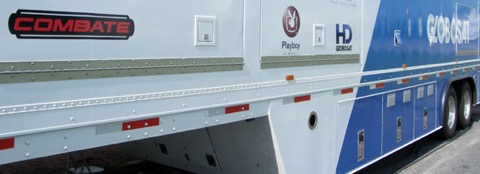
Event
The show went technically very well, but also the fighters from Brazil did their thing... they won a lot. We can expect the UFC back this year for sure in Rio de Janeiro or another city. These are important times for Broadcasting aligned companies in Brazil. With the 2 big events, the FIFA World-cup 2014 & Olympic games 2016 on our doorstep this UFC event shows that Brazil is technically ready for delivering top quality productions. If all personnel starts speaking and understanding better english there will be a wide market of jobs available for the local people.
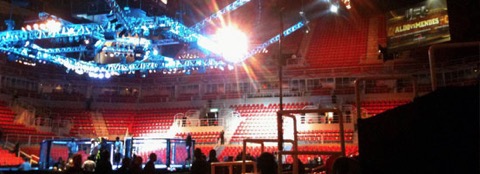
mentioned:
UFC
Alfacam Brasil
Casablanca Online
SporTV GloboSAT
Globo TV


